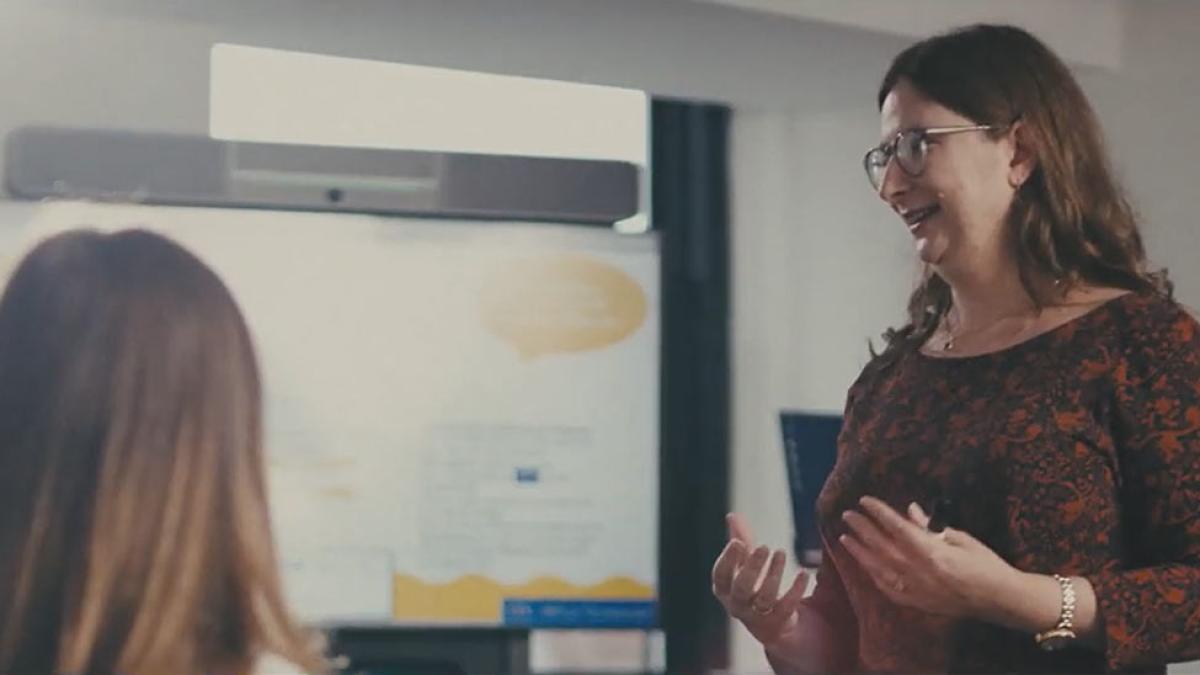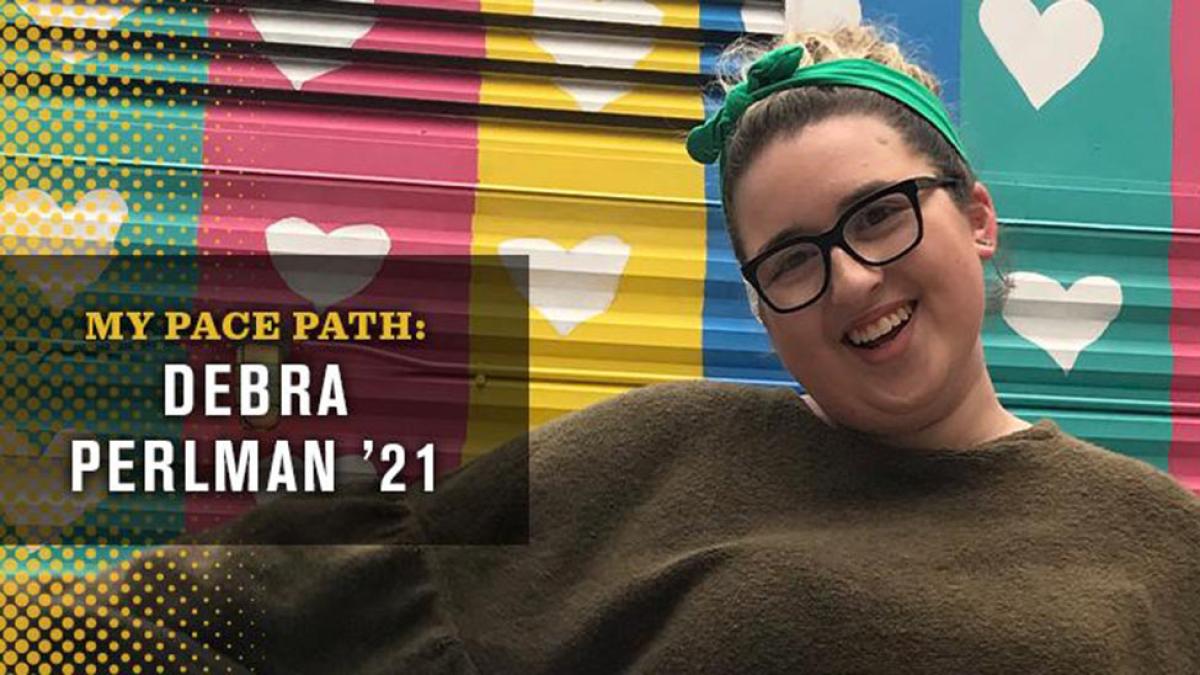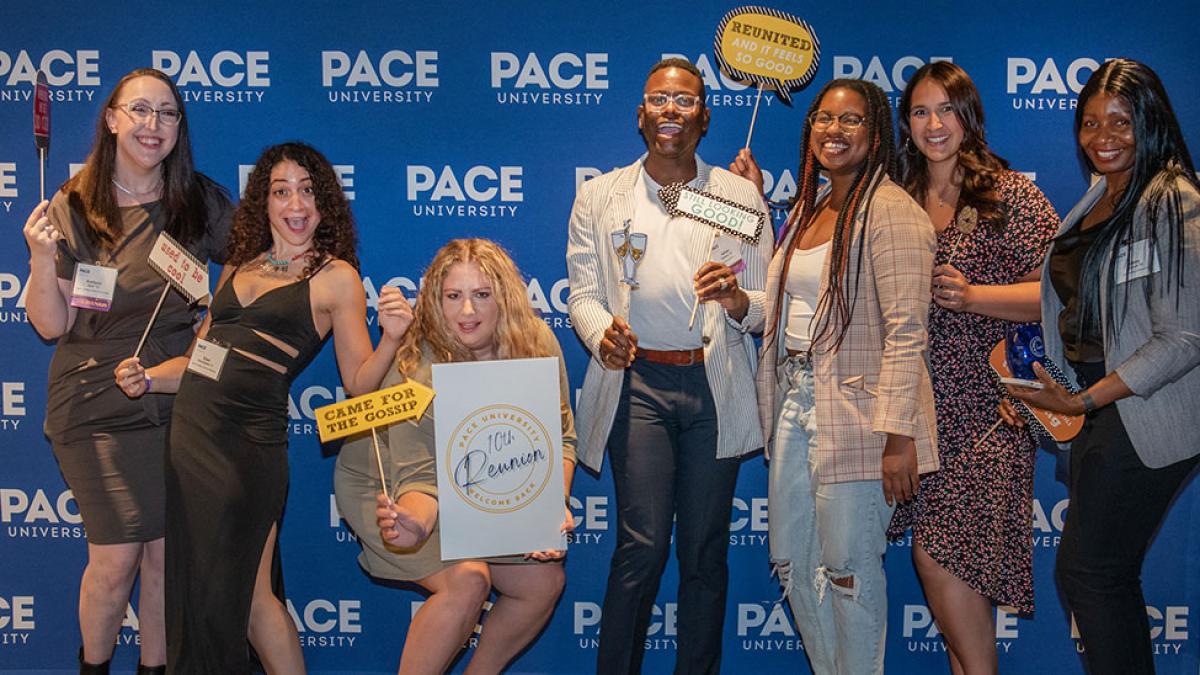Biology professor Nancy Krucher, PhD, understands the transformative power of research. She’s a pioneer in the fight against breast cancer, and she’s just received a three-year $400,241 grant from the National Cancer Institute through the National Institutes of Health to study new methods to combat cancer cell development of resistance to targeted treatments.
Revitilizing One Pace Plaza East
This past December, Pace University announced plans to transform One Pace Plaza to include new academic spaces, a modernized residence hall, and a new state-of-the-art Performing Arts Center that will serve its performing and creative arts programs and act as a central gathering space for our community and our neighborhood.
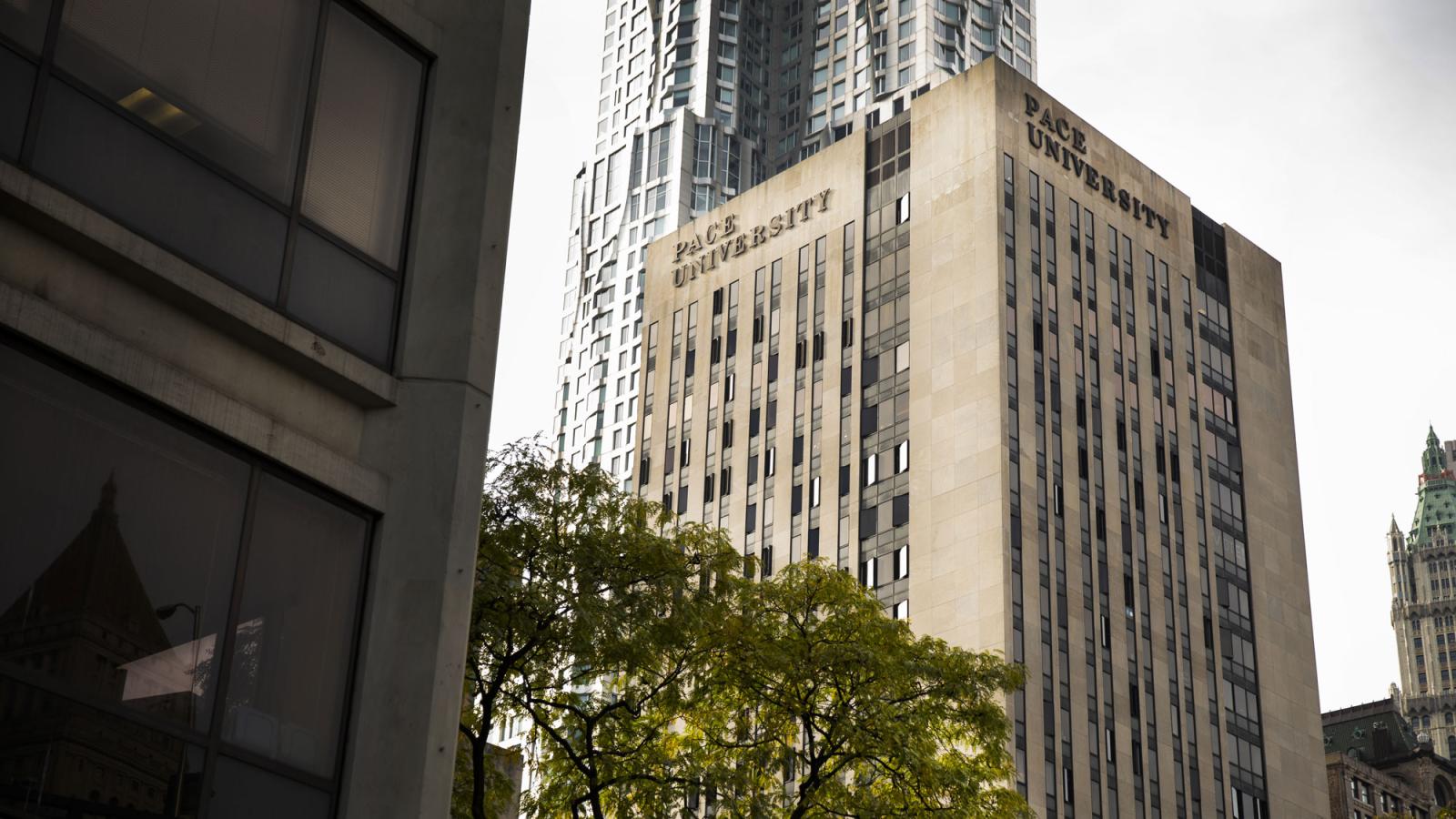
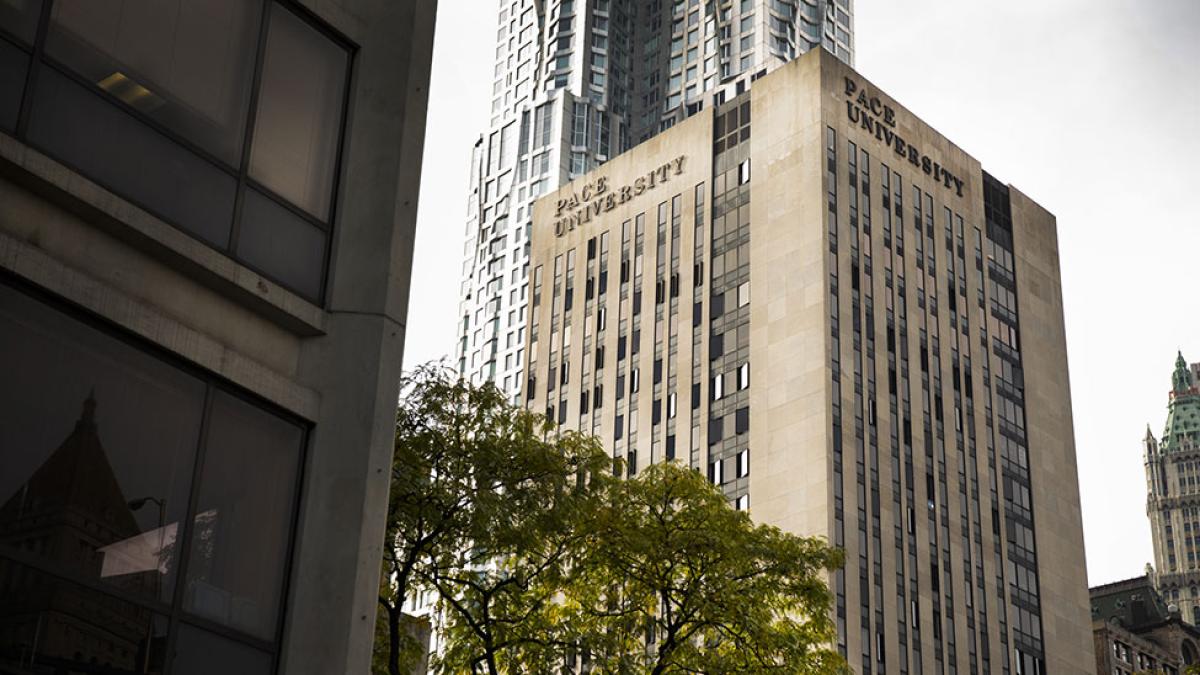
This past December, Pace University announced plans to transform One Pace Plaza to include new academic spaces, a modernized residence hall, and a new state-of-the-art Performing Arts Center that will serve its performing and creative arts programs and act as a central gathering space for our community and our neighborhood.
Once complete, Pace will have a modernized building that reduces carbon emissions and improves energy efficiency while providing faculty, students, and staff with the facilities they need.
“Our Campus Planning and Facilities team has spent many months meeting and consulting with stakeholders while conceptualizing this project,” said Pace President Marvin Krislov. “This project is a major step forward for Pace University. I am excited for this next chapter, and I look forward to continued discussion in the coming days, weeks, and months.”
While the final details of the renovation are still in development, here is the broad outline of the planned revitalization:
- Reconstruction of the lower floors of One Pace Plaza East, creating an inviting and modern building with classroom and creative arts spaces, collaboration spaces, and a Performing Arts Center that will include a proscenium theater to replace the Schimmel Center plus other theater and support spaces. This provides the up-to-date instructional, creative, and performance spaces we need, and it keeps our large gathering space—used by the entire University and the broader community—at the center of our campus.
- Renovations and upgrades to Maria’s Tower, providing additional, desirable residential spaces for students. This added capacity, when combined with the addition of 15 Beekman, will allow Pace to exit its leased residence hall at 55 John Street.
- When complete, One Pace Plaza will be fully modernized, including its outdated central plant, reducing carbon emissions. All code issues—present and upcoming—will be addressed for the entirety of One Pace Plaza.
Construction is expected to start in the fall of 2023 and be completed in early 2026. Pace’s Campus Planning and Facilities team has spent many months meeting and consulting with stakeholders while conceptualizing this project.
Funding for this ambitious project is coming from a variety of sources, including money set aside in Pace’s construction fund, the ability to issue debt, and fundraising. New York State and the federal funding will also complement a targeted fundraising campaign.
More from Pace Magazine
Learning takes many forms. Thanks to the Office of Research’s Classroom-Based Research Award, Occupational Therapy Professor Lisa Raymond-Tolan is adding student-created podcasts to her curriculum.
Through interdisciplinary collaboration, the School of Education and Dyson's Film and Screen Studies departments are helping a major school district in Florida tackle the challenges of today’s teacher shortage head-on.
Touching Down Into Pace's Record Books
Carlton Aiken’s final year as Pace’s QB was a memorable one, earning him a number of well-deserved accolades and a permanent place in Pace Football history.
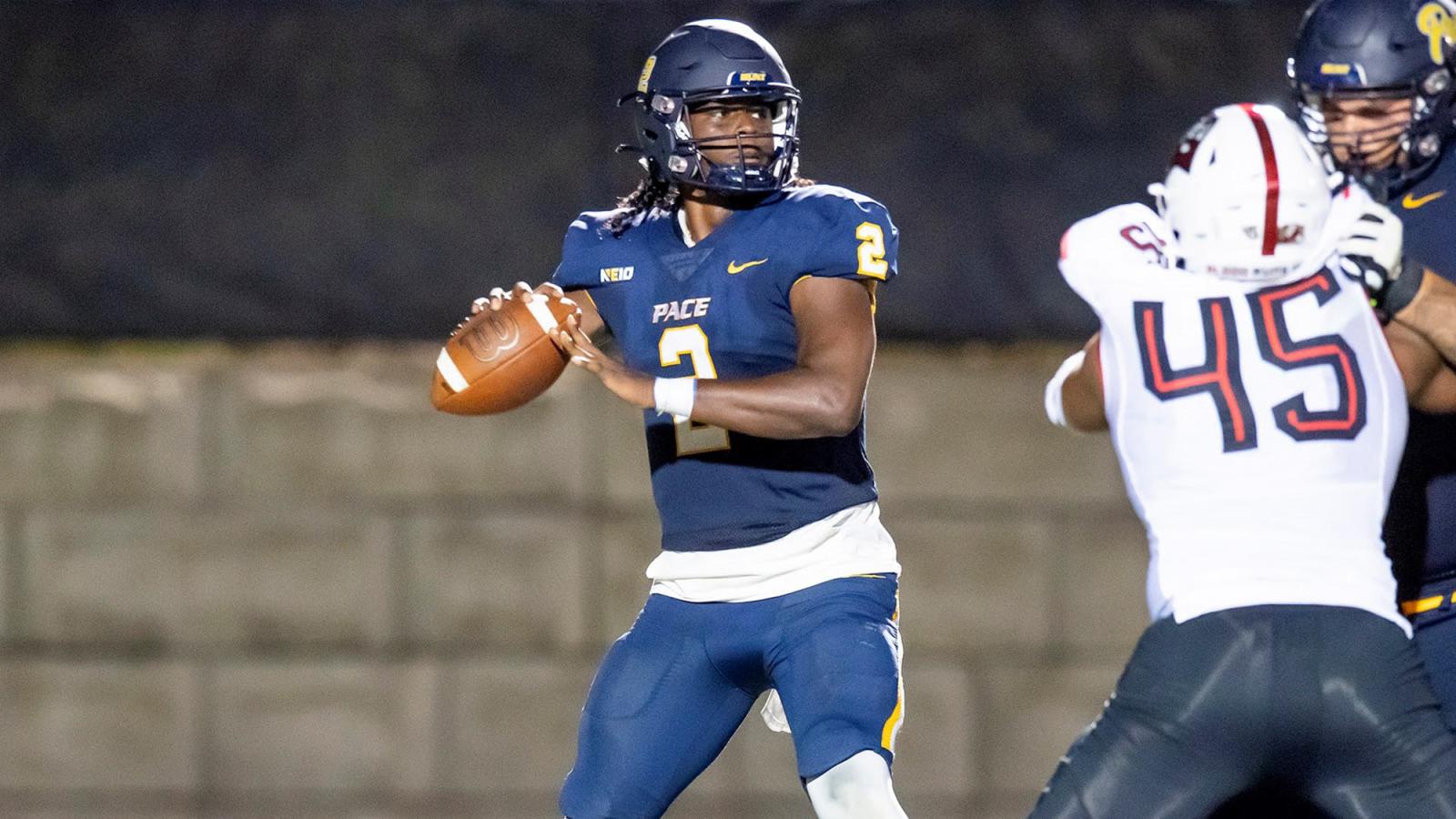
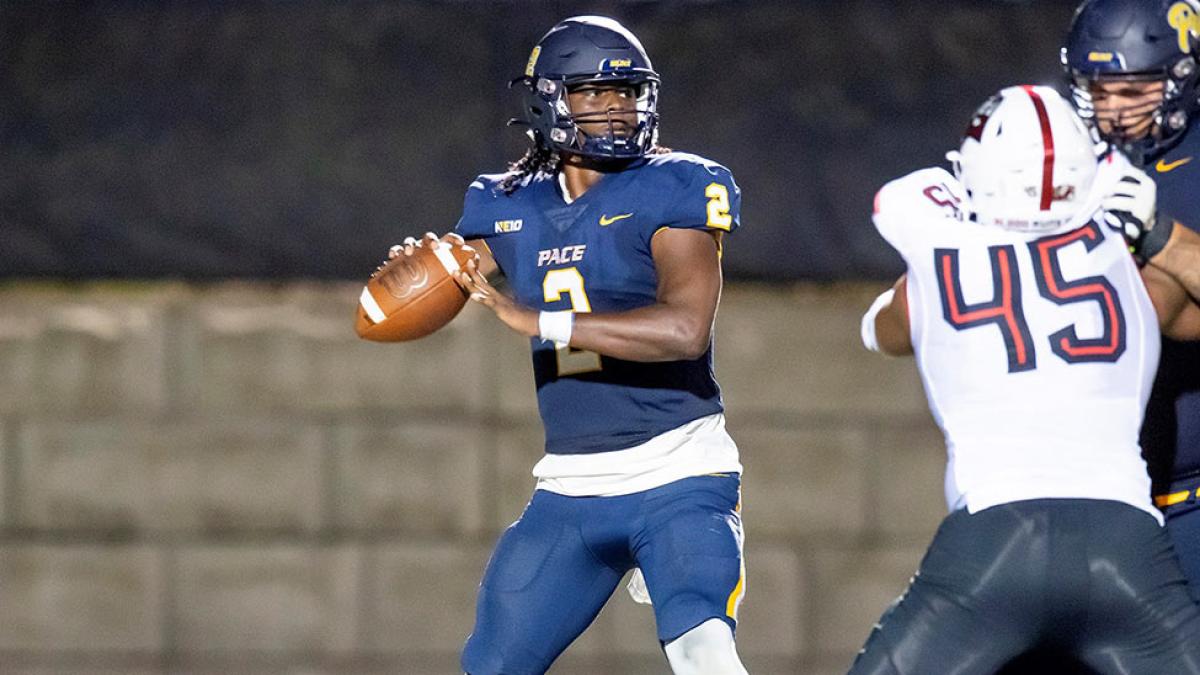
Carlton Aiken ‘21 has been one of the key figures for Setters football for the past several years. Now, he’ll be forever in the record books.
In the second quarter of an October matchup against Post, Aiken found Franklin Castillo Diaz in the endzone to give the Setters a commanding lead. Yet, the touchdown was anything but routine; it was Aiken’s 42nd touchdown pass in the blue and gold, passing Kevin Enterlein ’88 on the all time list, whose record stood for over 30 years.
Aiken, a dynamic passer who has also played wide receiver and running back over the course of his collegiate career, has finished his college career incredibly strong. Leading the Setters to a 6-4 record, he combined for 23 touchdowns (17 pass, 6 rush), and ranked third in passing yards (1,799) and rushing yards (694) among all NE-10 players. Most notably, Aiken was named the Most Valuable Player of the NE-10 Conference, the first-ever Pace player to win the prestigious conference-wide award. He was also given an Honorable Mention to the Don Hanson 2022 NCAA DII All-America team.
As for what’s next? Aiken’s unique skill set and experience makes him one of the rare candidates to be able to make the leap from Division II Athletics to the professional level. Aiken has officially declared for the 2023 NFL Draft, hoping to be the first-ever Pace football player to make it to football’s greatest stage.
“My game translates extremely well to the next level. Experience and my play-making ability are what sets me apart,” said Aiken in an interview with scouting site NFL Draft Diamonds. “Whether it’s 3rd down, the 4th quarter, or overtime, I know how to keep my composure in these situations.”
More from Pace Magazine
Through interdisciplinary collaboration, the School of Education and Dyson's Film and Screen Studies departments are helping a major school district in Florida tackle the challenges of today’s teacher shortage head-on.
Learning takes many forms. Thanks to the Office of Research’s Classroom-Based Research Award, Occupational Therapy Professor Lisa Raymond-Tolan is adding student-created podcasts to her curriculum.
From amazing stats to stellar students and alumni, here are just a few of our favorite things.
Combatting Cancer
Biology professor Nancy Krucher, PhD, understands the transformative power of research. She’s a pioneer in the fight against breast cancer, and she’s just received a three-year $400,241 grant from the National Cancer Institute through the National Institutes of Health to study new methods to combat cancer cell development of resistance to targeted treatments.

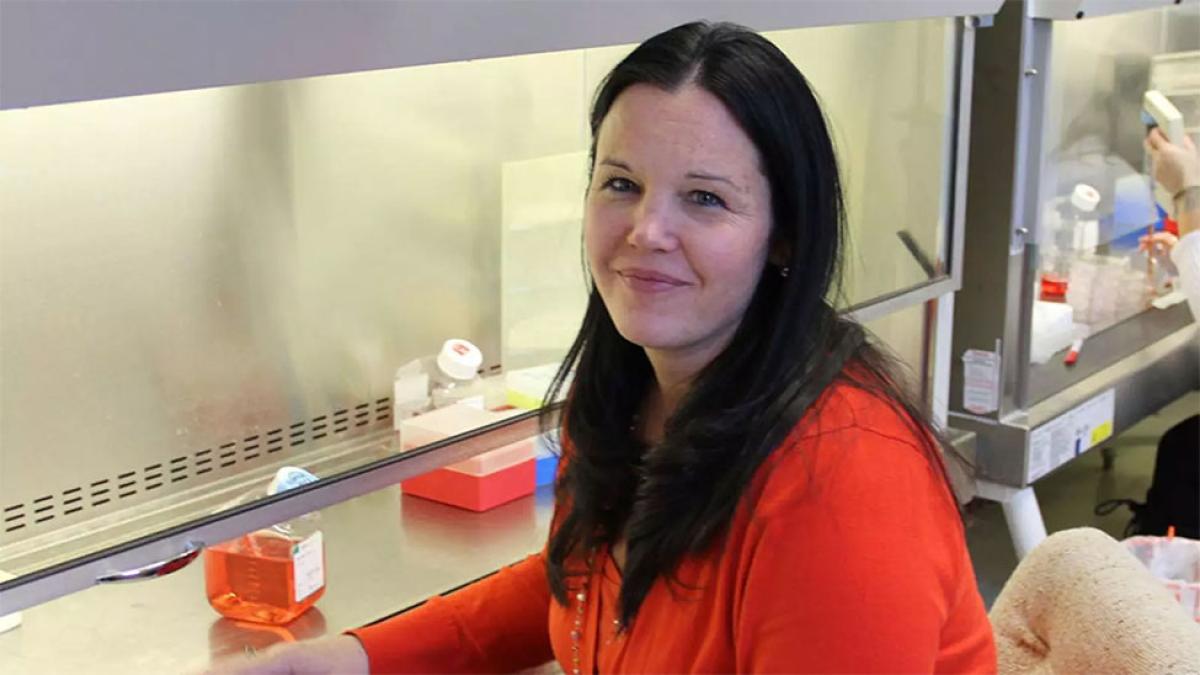
Biology professor Nancy Krucher, PhD, understands the transformative power of research. She’s a pioneer in the fight against breast cancer, and she’s just received a three-year $400,241 grant from the National Cancer Institute (NCI) through the National Institutes of Health (NIH) to study new methods to combat cancer cell development of resistance to targeted treatments.
“Cancer is a major health concern in our country and throughout the world,” said Professor Krucher. “Currently, much of cancer research focuses on identifying specific mutations or abnormalities in tumor cells and creating drugs that target them. These targeted therapies have exhibited a great deal of success in some cancer types. Unfortunately, while targeted therapies usually work for a few months or a few years, cancer cells often develop resistance to these agents.”
Targeted therapies—which involve certain drugs used to specifically target the ways in which cancer cells grow, divide, and spread—are becoming more common in cancer treatment. However, cancer cells can acquire resistance to the targeted agent, making the treatment less effective. ATP-citrate lyase (ACLY) is a critical enzyme in cancer cell growth that can be activated as a response to targeted therapies, particularly in treatment of breast cancer and melanoma, often resulting in poor prognosis.
In February 2020, the FDA approved a new ACLY inhibitor, and another was recently developed. In this project, these agents are predicted to have anti-cancer activity. Krucher’s research aims to investigate the hypothesis that targeting ACLY with these inhibitors can reverse resistance in breast cancer and melanoma.
“Through this grant, Professor Krucher and our biology students have the opportunity to uncover critical information that could improve the effectiveness of these vital treatments.”
Because the newly developed ACLY inhibitors that will be used in this study have largely not been tested on cancer cells to date, Krucher hopes her work can provide new insight for cancer treatment, including the development of novel drug combination regimens. Additionally, Krucher’s work will employ an in vivo model of cancer metastasis in melanoma as well as three-dimensional cancer cell cultures, an innovative and effective approach to studying the physiological tumor environment.
Undergraduate biology students will also be closely involved in this research, carrying out a majority of the experiments outlined in the study, helping prepare them for careers in the biomedical research workforce.
“Professor Krucher is doing incredibly important work in the field of cancer research, an area of biomedicine that touches so many lives around the world,” said Tresmaine R. Grimes, PhD, dean of the Dyson College of Arts and Sciences and School of Education. “Through this grant, Professor Krucher and our biology students have the opportunity to uncover critical information that could improve the effectiveness of these vital treatments.”
More from Pace Magazine
From amazing stats to stellar students and alumni, here are just a few of our favorite things.
Through an inter-collegiate emerging technology competition, graduate students Chuk Ezuma and Rikin Gajjar developed M3, a product that would enable medical professionals to treat elderly patients using the technology of tomorrow.
Through interdisciplinary collaboration, the School of Education and Dyson's Film and Screen Studies departments are helping a major school district in Florida tackle the challenges of today’s teacher shortage head-on.
This Episode is Sponsored by: Pace University
Learning takes many forms. Thanks to the Office of Research’s Classroom-Based Research Award, Occupational Therapy Professor Lisa Raymond-Tolan is adding student-created podcasts to her curriculum.
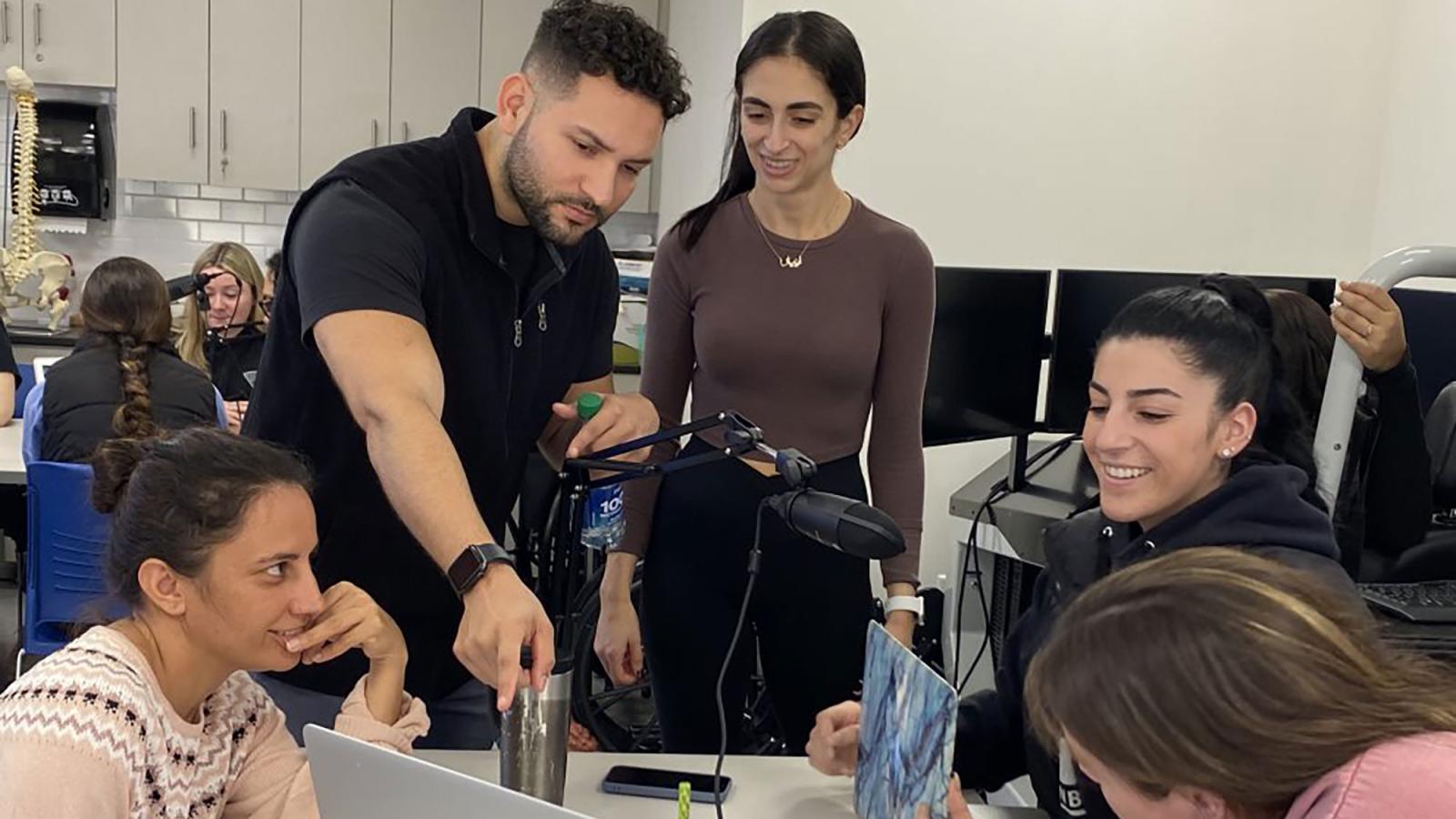
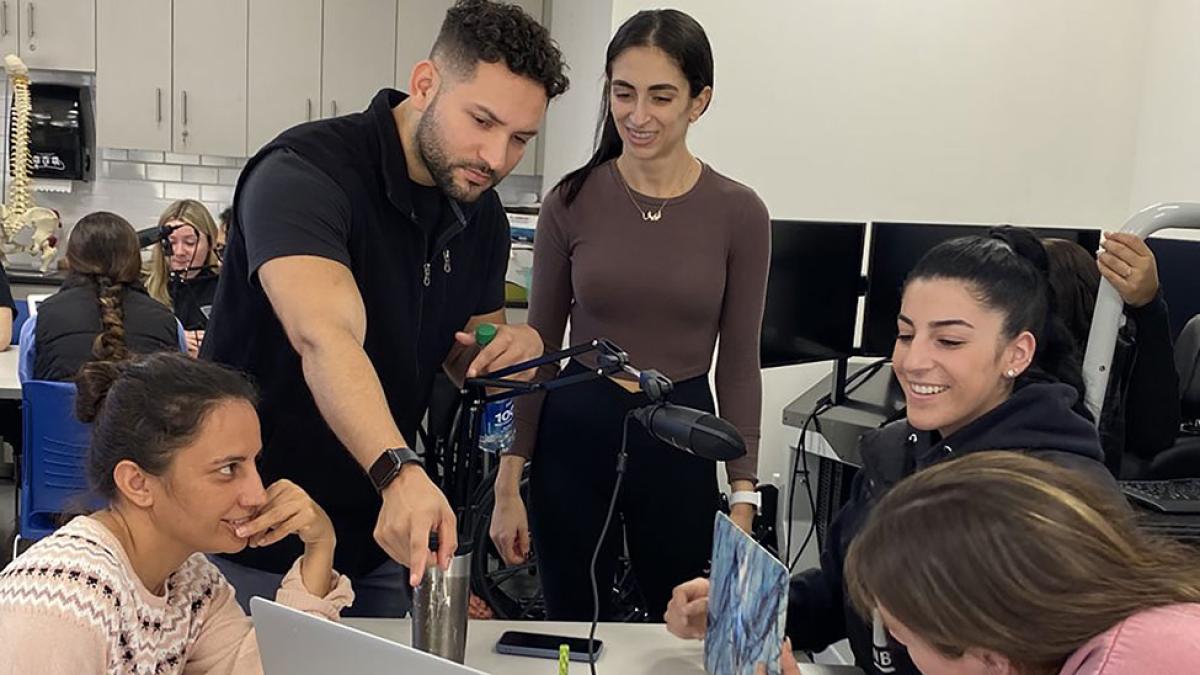
University teaching, traditionally, is often conceived in the form of a lecture—the professor, equipped with years of knowledge and credentials, espouses their wisdom as students furiously scribble notes; or, more likely today, type furiously on their laptops.
Yet, as we all know, teaching and learning comes in many forms—especially with today’s endless array of technological innovation.
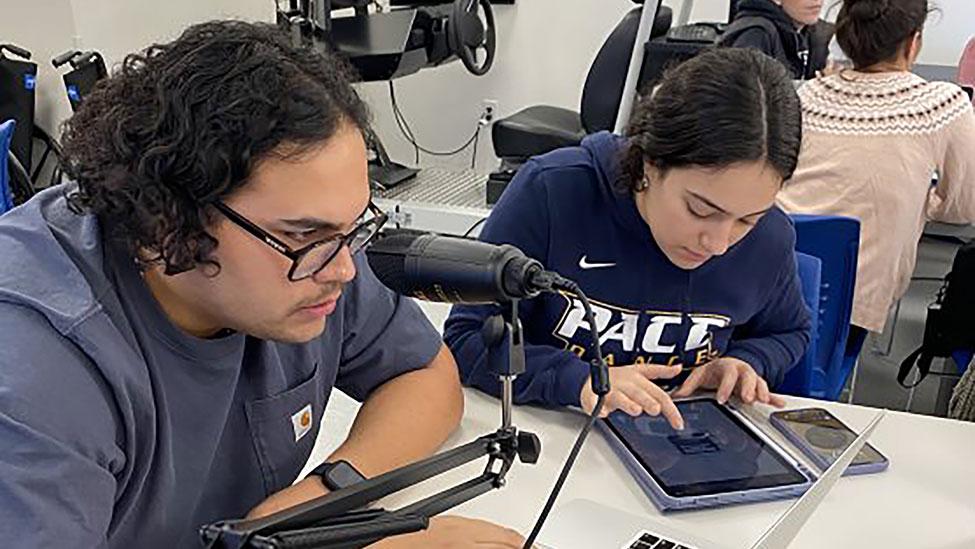
“I’m obsessed with student engagement and active learning—I try to avoid that sort of blah-blah lecture, which is hard to avoid in its entirety, but I like to where I can,” says College of Health Professions Occupational Therapy Professor Lisa Raymond-Tolan, OTD, OTR/L. “I think it’s just so much more beneficial for students to be actively co-creating their own learning. I like flipping the classroom.”
Raymond-Tolan commutes to the Westchester Campus each day from her home in Brooklyn—which often leaves her stuck in bumper-to-bumper traffic, listening to podcasts to pass the time. On one of these commutes—Raymond-Tolan credits driving for her giving her all her best ideas—something clicked.
“What if students not only listened to podcasts to support their learning, but if they created a podcast? It hits all the points I love—it’s hands on, it’s engaging, it’s co-creating learning, and then it’ll be a study tool for everyone else.”
“What if students not only listened to podcasts to support their learning, but if they created a podcast? It hits all the points I love—it’s hands on, it’s engaging, it’s co-creating learning, and then it’ll be a study tool for everyone else.”
Fortunately, Raymond-Tolan’s interest in active and innovative learning methods is shared by Pace’s Office of Research. The Office of Research offers a Classroom-Based Research Award, in which faculty members can receive grants for innovative ideas to incorporate original, authentic research projects into the undergraduate curriculum. In part, this grant plays a role in ensuring that Pace is at the forefront of continually advancing the possibilities of classroom-based learning; and helps ensures that the Pace classroom experience is much more than, in Raymond-Tolan’s words, just a “blah-blah lecture.”
Raymond-Tolan’s project, Creating Podcasts as an Innovative Learning Tool in Occupational Therapy Graduate Education, was awarded this grant. She and her students in her OTH 500: Occupational Therapy and Analysis class then got going, working in teams to create 15-minute episodes about concepts covered in class. Episodes focused on topics ranging from ethics, history of occupational therapy, models of occupational therapy, and much more.
Listen to: Call Her OT: Occupational Therapy and Ethics
“Through the grant we were able to get podcast microphones, and then we figured out platforms people felt comfortable with for recording on and editing with. They had ‘callers’ into their shows. It felt like an authentic podcast experience.”
Raymond-Tolan believes the podcast initiative is very much in the spirit of occupational therapy, a profession which isn’t conducive to passive learning.
“In OT we have labs, and our labs are very active. OT is about how do we do things and participate in things that are meaningful to us. I wanted to take this one step further and make foundational lecture content a more active learning experience.”
On a practical level, the podcasts have been a resounding success. This fall, the inaugural “podcast class” concluded the semester with a listening party. The episodes were then made available to all students, who were able to use them for reference while studying for finals.
As for the future? Raymond-Tolan plans on continuing the podcast project for the Fall 2023 OT 500 cohort and is considering expanding it into other classes. Discussing the ways students consume information in 2023, she adds that meeting students where they currently spend time and consume content—whether that’s on social media, podcasts, or anything else—can be a great way to get students more engaged in their studies and, if executed well, can truly enhance the educational experience.
Plus, it’s not a bad alternative to grading papers.
“I think doing this kind of material is really engaging for students, but it’s also really fun for a faculty member,” she adds.
More from Pace Magazine
From amazing stats to stellar students and alumni, here are just a few of our favorite things.
The Pace Entrepreneurship Studio supports new startups, from ideation to funding—from conception to operation. Our mission is to teach you the "how" and to support the "what"—providing students and alumni with a complete blueprint for establishing successful businesses.
Meet Tabi Haly '06, the software engineer, singer-songwriter, disability advocate, and proud New Yorker taking a stance.
Winter 2023: 10 Things to Inspire
From amazing stats to stellar students and alumni, here are just a few of our favorite things.


We’re All In
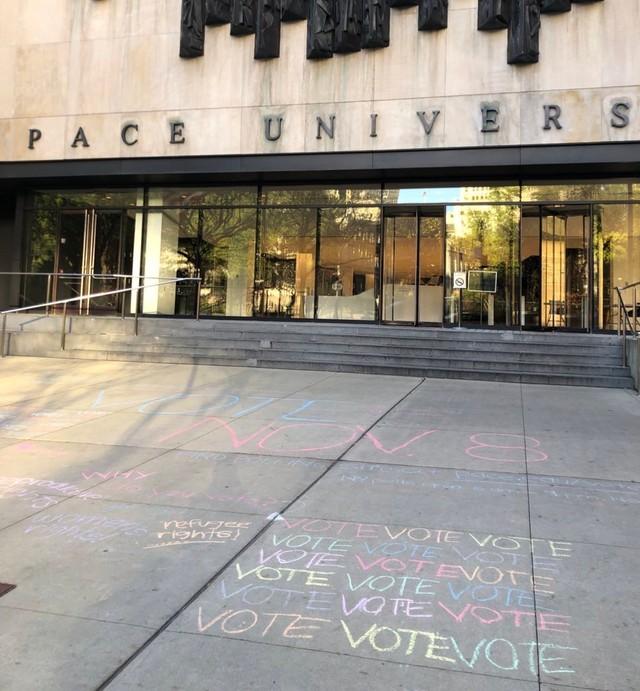
Pace University has been recognized by the ALL IN Campus Democracy Challenge (ALL IN) as a 2022 ALL IN Most Engaged Campuses for College Student Voting. Through campus and community partnerships, student leaders register and empower student voters and advocate for institutional changes necessary to eliminate barriers to student voter participation.
Coming Together for a Cause
On Giving Tuesday, the Pace Community rose to the occasion. 1,204 donors from 34 states and 3 countries helped raise $417,925, which will go on to support our students make the most of their education and their lives beyond graduation.
It’s Not Easy Being Green
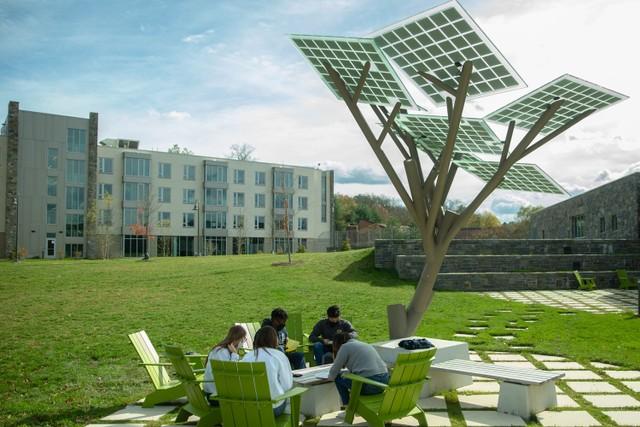
Did you know that Pace was included as part of The Princeton Review’s 2023 list of Green Colleges? In fact, since 1973 Pace has implemented more than 350 projects aimed at conserving electricity, natural gas, steam, or water.
A New Resource for Westchester Residents
The Elisabeth Haub School of Law at Pace University has partnered with Legal Hand, Inc., a New York State not-for-profit corporation, to launch the Legal Hand Call-In Center serving Westchester County. The virtual center, dedicated to expanding and providing access to legal information for all Westchester community members, will be staffed and operated by the Elisabeth Haub School of Law at Pace University and is planned to open for visitors in the new year.
Most performers on Broadway? Yeah, we did that.
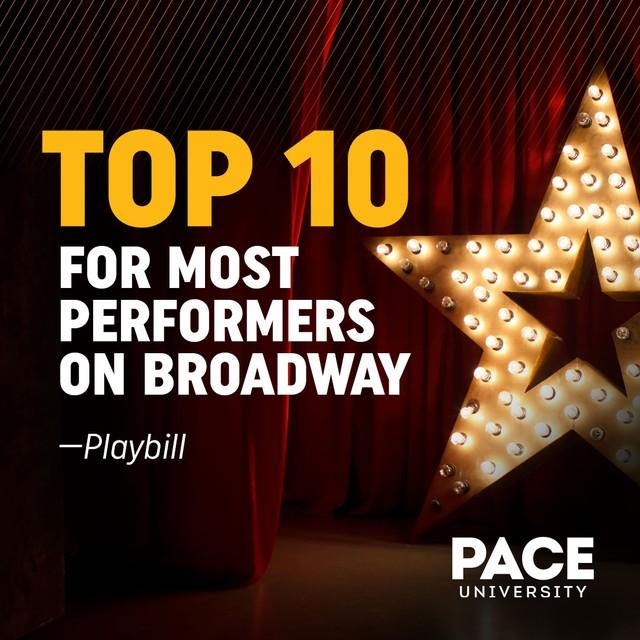
Hamilton. Beetlejuice. Dear Evan Hansen. Pace grads know how to make it to the main stage. This year, we made Playbill’s Big 10 list of schools and colleges with the most alumni performing on Broadway in the last season.
Making a Lasting Impact
2022 marked Pace’s third annual Social Justice Week. This week of learning and reflection is designed to offer an ongoing memorial for Pace student Danroy “DJ” Henry, and to further commit Pace University to social justice and anti-racism. This year saw nearly 40 events attended by more than 1,000+ members of the Pace Community, including the retirement of DJ’s football jersey at a home game held on October 29.
A New Appointment
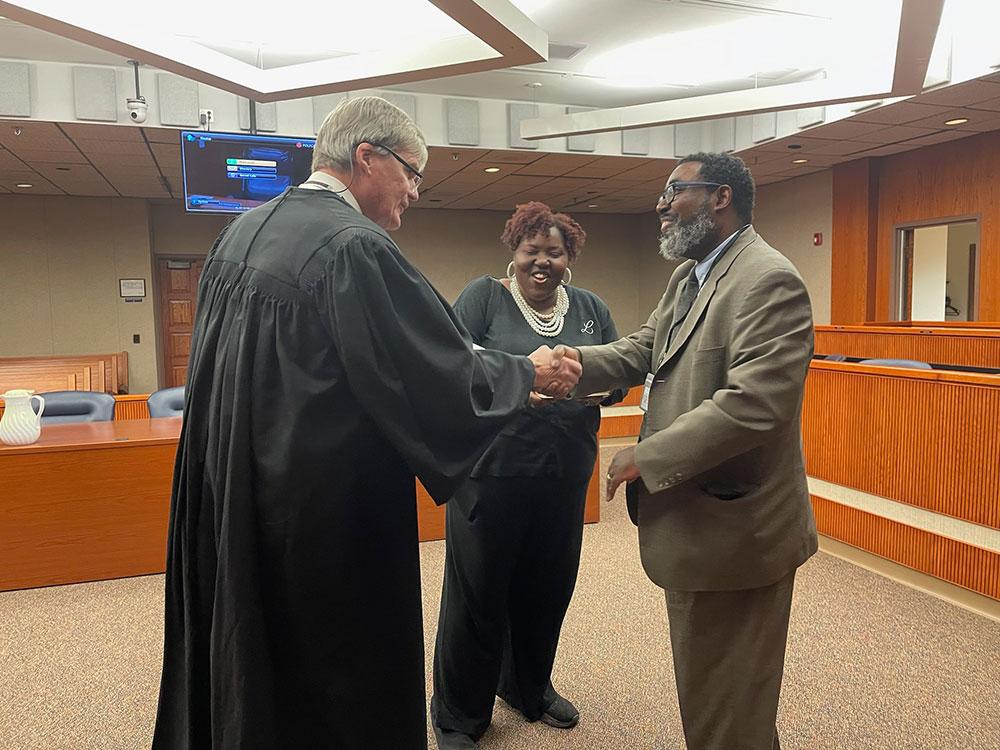
This past December, the Senate Judiciary Committee approved five nominees for Superior Court judgeships, one of which included Pace University Trustee Christopher A. Edwards '95. The Superior Court Judge was recently assigned to the Superior Court, Criminal Division of Somerset County, New Jersey.
We’re Here. We’re Queer.

Pace University has been named as one of the 40 best colleges and universities across the country for LGBTQ+ students by Campus Pride, the preeminent resource for LGBTQ+ leadership development, inclusion, and advocacy within higher education. In being recognized as “Best of the Best,” Campus Pride noted that Pace and other schools on its list create a safe, welcoming, and inclusive environment for students, faculty, and staff alike.
Pace at the UN
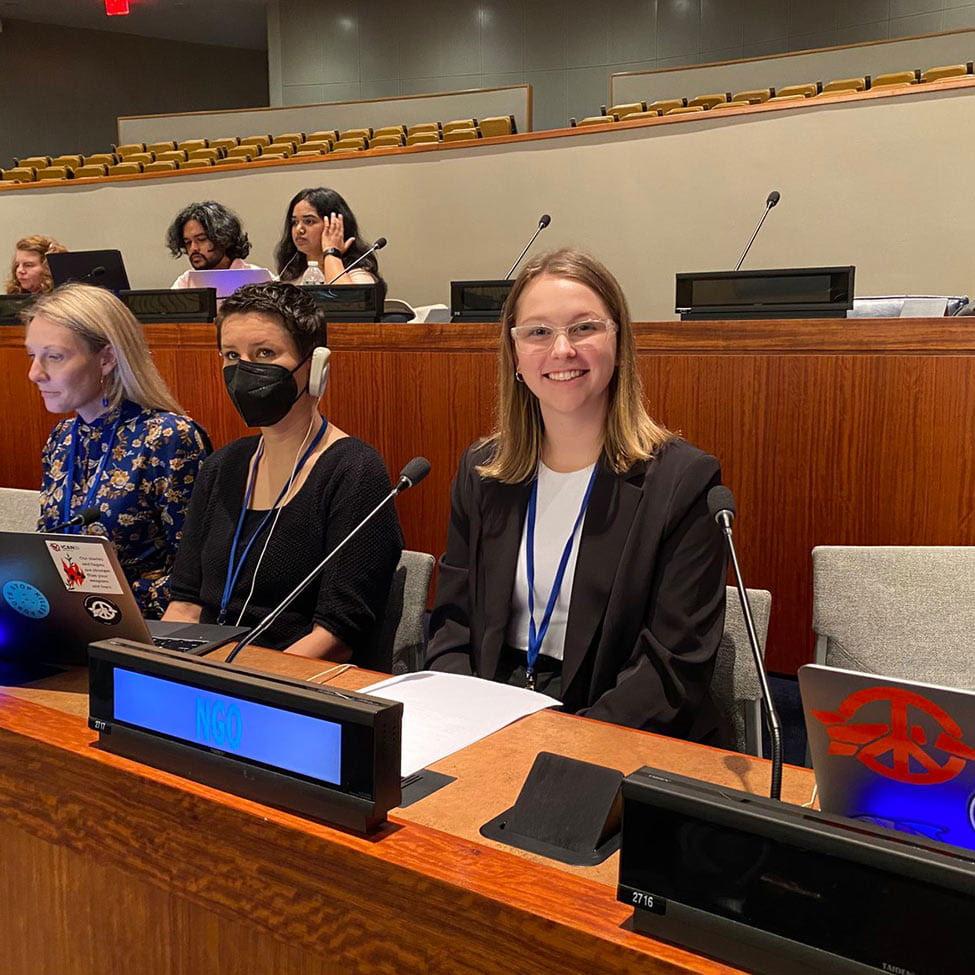
From the classroom to the General Assembly, several Pace students spent time this semester at the United Nations headquarters, right here in Manhattan. Through coursework in departments like Political Science and Peace and Justice Studies, as well as through unique extracurricular programs like the UN Academic Impact Millennium Fellowship, students are taking advantage of the opportunities that come their way all while representing Pace on the global stage.
From Pace to the Pros
After a stellar career in the Setter Blue and Gold, defensive lineman Jah’Sheem Martin is tackling a new challenge. He was drafted by the XFL’s Las Vegas Vipers, becoming the first Pace football player in the history of the program to be drafted into the XFL. Congrats, Jah’Sheem!
More from Pace Magazine
Meet Tasha Darbes, PhD, a Pace School of Education professor with a passion for the transformative power of education.
Meet Tabi Haly '06, the software engineer, singer-songwriter, disability advocate, and proud New Yorker taking a stance.
Pforzheimer Honors College student Debra Perlman ’21 has been extremely busy in her time here at Pace. She’s been part of the first-year and second-year honor societies, Alpha Lambda Delta and Lambda Sigma, a member of the Pace Women in Tech organization, a participant in Pace’s NYC Design Factory, and even a 2019 Forbes Under 30 Summit scholar—not to mention her internships with major companies.
Getting Ahead of the Teacher Shortage
Through interdisciplinary collaboration, the School of Education and Dyson's Film and Screen Studies departments are helping a major school district in Florida tackle the challenges of today’s teacher shortage head-on.
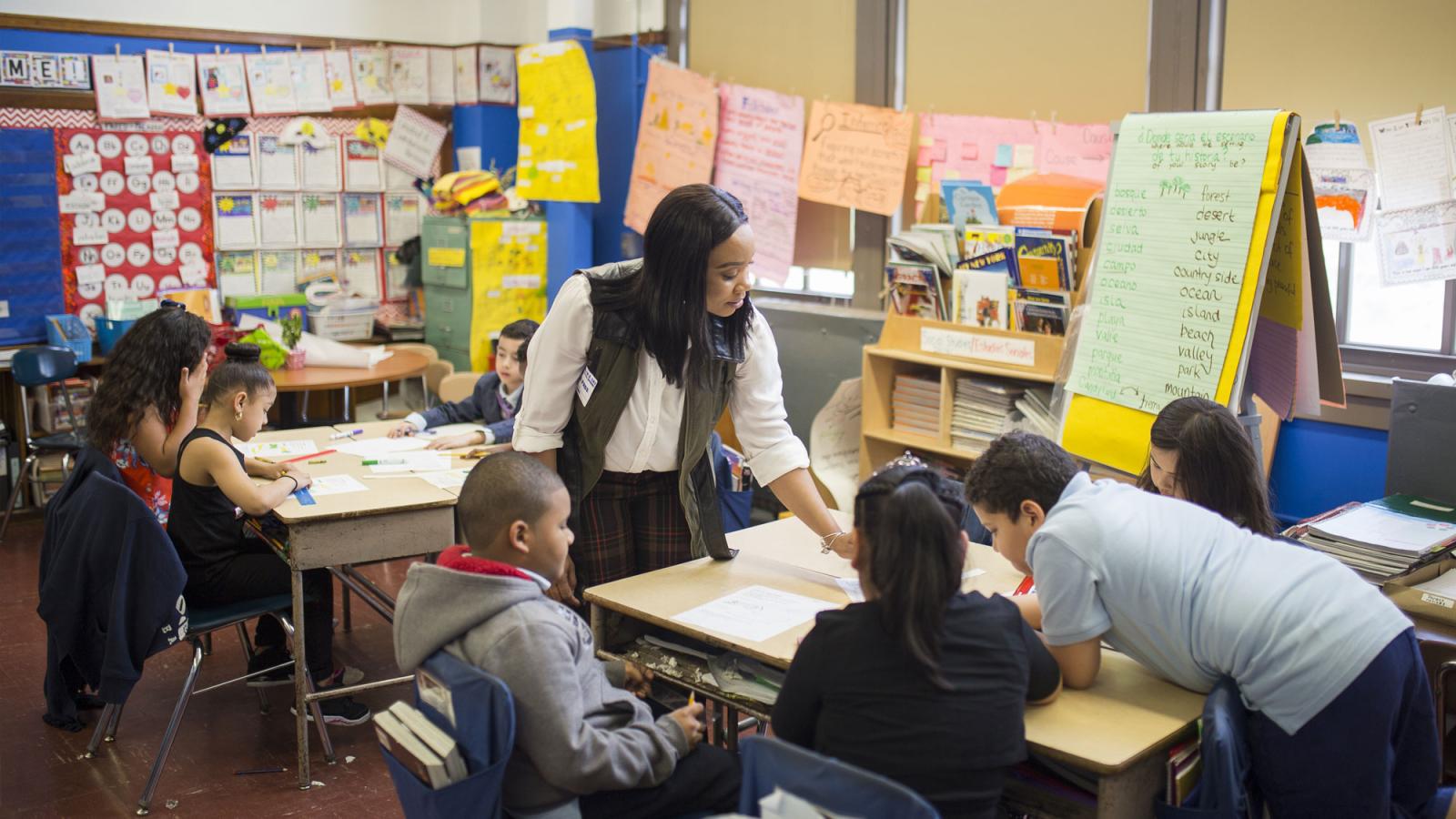
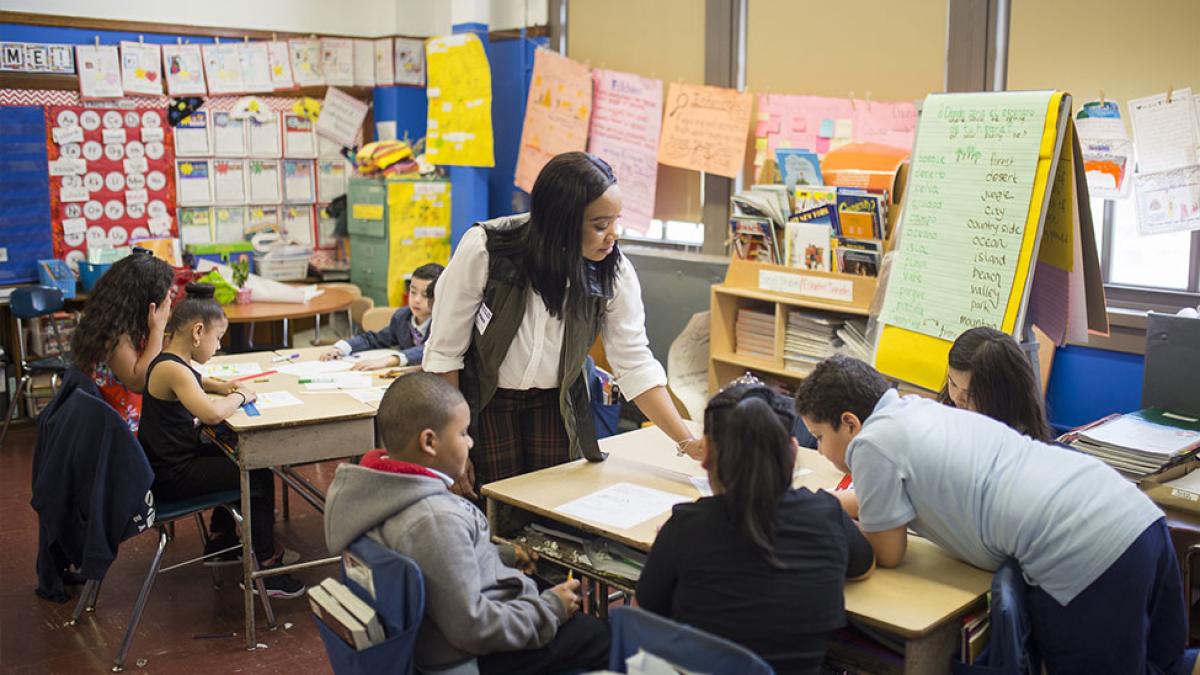
It’s not every day that a major public school district in the United States asks for your help and expertise.
Yet for Pace University and the School of Education, that’s exactly what has happened. And what started out as a simple request from a school district in a heavily populated area of Florida has blossomed into a vibrant interdisciplinary project housed right here at Pace, that is making considerable real-world impact.
The story begins about a decade ago, when Pace’s School of Education invested in mixed reality simulation technology, to serve as a complement for students’ work in the field as student-teachers. As SOE Professor Joan Walker, PhD, notes, this futuristic technology has proven to be quite helpful for teacher education, because it ensures that all pre-service teachers get exposed to certain classroom scenarios they might not have encountered in the field.
“The lab is great because what students experience in the field can vary quite a bit,” says Walker. “So, there’s a need for offering more consistency and giving our students a chance to confront some really common professional challenges that they’ll need to know how to address as educators.”
Through this technology, the School of Education, in conjunction with University Relations, was able to create short video clips—each of which focused on a specific teaching scenario, followed by correct and incorrect ways to approach that given situation.
For example, a student might be talking during an exam, and the clip would examine different ways to intervene, as well as the effectiveness of each method. These clips lived on YouTube, and served primarily as marketing materials for the School of Education.
Fast-forward to the present. A school district in Florida was looking for professional development tools for their growing population of temporary instructors and substitute teachers. Given the nationwide teacher shortage, adequate support for temporary instructors has become even more vital.
“As anyone who is reading the news focusing on public education can see, there’s a lot of turnover in the teaching profession right now, and a really strong need for temporary instructors as a result,” notes Walker. “Temporary instructors and substitute teachers have always been an important part of the workforce, but they’re especially critical now.”
“This is the definition of experiential learning.”
—Jennifer Pankowski, EdD
The school district came across Pace’s simulation videos and determined that they were exactly what they were looking for to help temporary instructors prepare for what they might encounter in the classroom. Realizing the value that these types of simulations could provide, they got in contact with Pace—and requested more episodes.
“They had a small grant, and they engaged us to make more episodes,” explains Walker.
Thus, the project began. Walker, alongside her colleague in the School of Education Associate Clinical Professor Jennifer Pankowski, EdD, and Dyson Film and Screen Studies Clinical Professor Gloria Vela, began to assemble a team. Pankowski, who had been working on cross-disciplinary education simulations using talent from the Pace School of Performing Arts for the past several years, was the perfect faculty member to take charge. Vela, who has been teaching at Pace for the past five years, has extensive career experience in film and television editing, commanded the visual storytelling and editing components as the post-production supervisor.
Together, they recruited four alumni, who were to be featured in and compensated for the project. Alumna Naya Rivera ’22 and current adjunct professor McEdwin Charles ’17 played the role of teachers; PPA alumna Sariah Thompson-James ’21 took charge as the immersion simulation specialist to lead the responses and actions of the student avatars; and alumna Madeline Allou ’22 served as the primary editor.
The team created eight original videos with specific scenarios that temporary instructors might encounter in the classroom—ranging from “Managing Classroom Disruptions,” to “Keeping All Students Engaged,” to “Apologizing to Reset the Tone.”
The videos were a mixture of Zoom recordings and simulation, posing creative editing challenges that Allou and Vela were excited to tackle.
“The way it was structured, it’s such an interesting way to tell a story, in the sense that the first example is not the best example,” says Vela. “It’s very engaging to watch.”
Allou, who served as the primary editor, found the opportunity to work with Zoom footage, as well as the ability to give back to Pace, among the highlights of working on the project.
“I enjoyed creating my own style for the videos,” says Allou. “Having that creative freedom is a really great aspect to have in a job. I also really enjoyed working for Pace, being an alumna now it was really awesome feeling connected to the school, even though my time learning there is over.”
On the educator side, Walker and Pankowski were impressed by the level of engagement that Naya and McEdwin brought to the project—suggesting and envisioning scenarios and responses that are most relevant to today’s student-teacher interactions, that Sariah, the interactor, was able to expertly build upon.
“The students are really connected to what’s going on in the field right now. They brought a lot of authenticity. The interactor, Sariah, picked up on that right away, and did a great job being an 11-year old,” adds Walker.
Walker, Pankowski, and Vela expressed their gratitude and enthusiasm for the opportunity to participate in this project, make a tangible impact in the field, and break out of departmental silos to create something truly innovative.
As Walker and Pankowski note, the interdisciplinary project is truly experiential learning at work.
“The project—involving different schools, students—there’s a lot to be said about when programs come together, that’s when we can create authentic spaces for the students to do the work,” said Walker. “I think that’s an example of what this project has been able to do.”
Another school district reached out to us, with all our cast of characters at Pace, we created something valuable,” added Pankowski. “This is the definition of experiential learning.”
More from Pace Magazine
Learning takes many forms. Thanks to the Office of Research’s Classroom-Based Research Award, Occupational Therapy Professor Lisa Raymond-Tolan is adding student-created podcasts to her curriculum.
The Pace Entrepreneurship Studio supports new startups, from ideation to funding—from conception to operation. Our mission is to teach you the "how" and to support the "what"—providing students and alumni with a complete blueprint for establishing successful businesses.
From amazing stats to stellar students and alumni, here are just a few of our favorite things.
Launching a Vision
The Pace Entrepreneurship Studio supports new startups, from ideation to funding—from conception to operation. Our mission is to teach you the "how" and to support the "what"—providing students and alumni with a complete blueprint for establishing successful businesses.
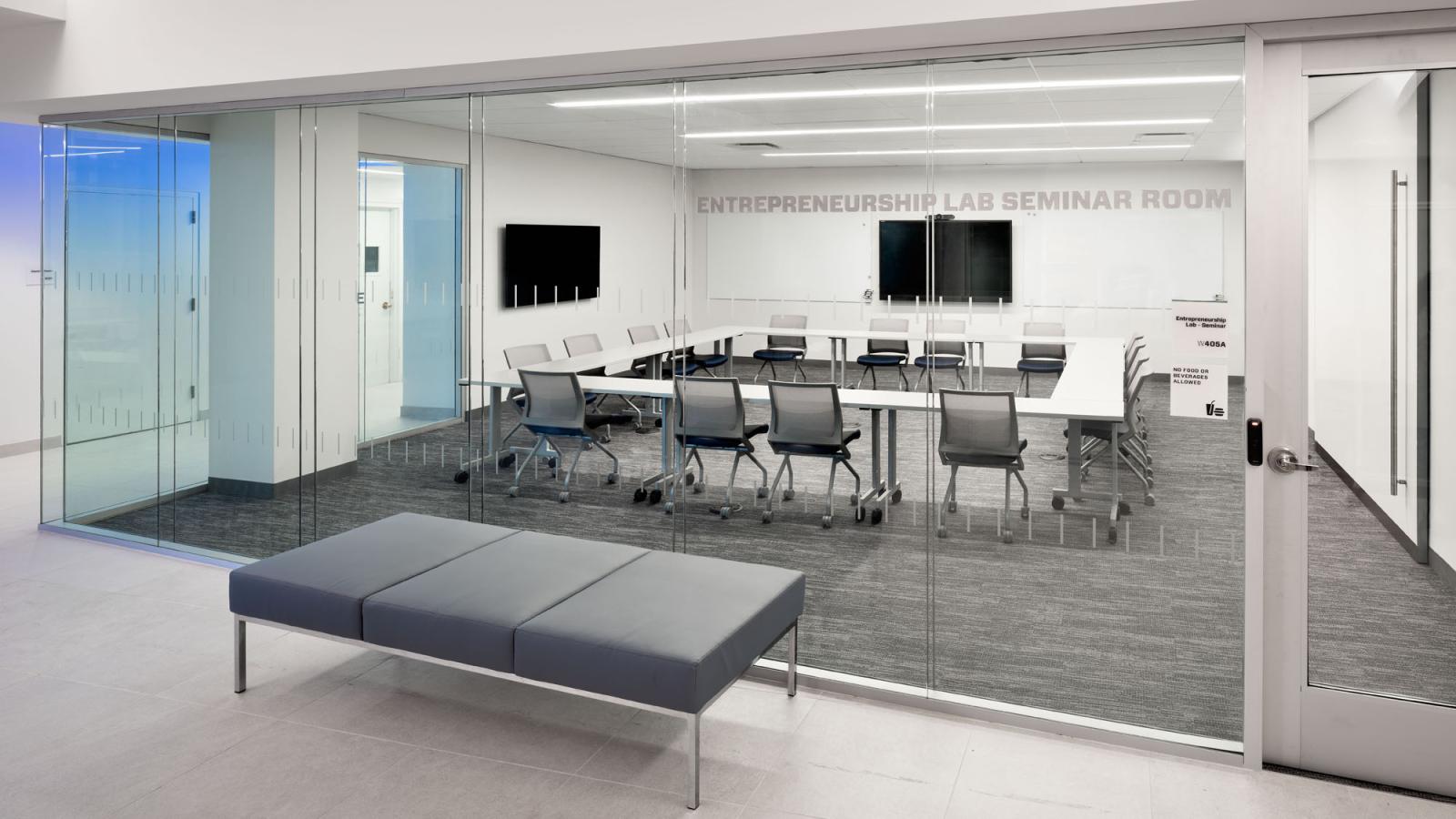
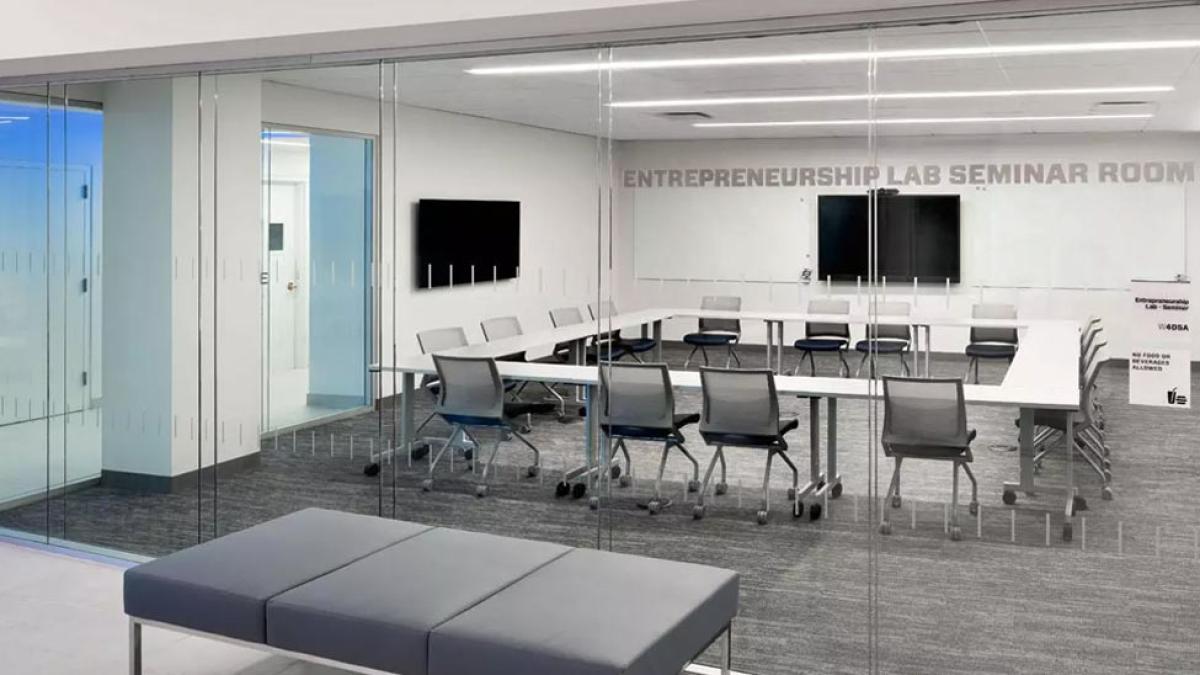
Pace University and its faculty, together with AnD Ventures, have established an entrepreneurship program and community that will provide a unique proposition to Pace's students and alumni.
The Pace Entrepreneurship Studio (PES) supports new startups, from ideation to funding—from conception to operation. Our mission is to teach you the "how" and to support the "what"—providing students and alumni with a complete blueprint for establishing successful businesses. PES will position the University as a leading institution for cultivating entrepreneurship and innovation in the tri-state area.
“This is a unique opportunity that we are sharing with the Pace community to support their success and the development of extraordinary products and services. Pace remains committed to facilitating great partnerships for our students, alumni, faculty, and staff” said Lawrence G. Singleton, dean of the Lubin School of Business.
“We are excited to build our presence in New York City and support Pace in building a leading entrepreneurship program aimed at actually building companies, not just educating students and alumni on how to build them."
Through the Studio students, faculty, and alumni are connected to international leaders and business professionals who can help them take their startups to the next level. PES' mission is to establish and foster student and alumni innovation and expose and develop new entrepreneurial opportunities. We provide abridged access to venture capital through special and professional sessions with the PES team and leaders from the New York City ecosystem.
“We are excited to build our presence in New York City and support Pace in building a leading entrepreneurship program aimed at actually building companies, not just educating students and alumni on how to build them,” said Roy Geva Glasberg, co-founder and managing partner of AnD Ventures. “AnD Studio is a venture builder and we are excited about developing venture capital-driven programming at the university.”
Ready to learn more? Visit the Pace Entrepreneurship Studio's page to get involved.
More from Pace Magazine
Find your people. Through the Alumni Association’s affinity groups, you can get connected with fellow alumni around a common interest, identity, or purpose.
From amazing stats to stellar students and alumni, here are just a few of our favorite things.
Meet Tabi Haly '06, the software engineer, singer-songwriter, disability advocate, and proud New Yorker taking a stance.
Finding Community After Service
The transition into higher education is always bumpy but can be especially challenging for veterans and those leaving active service. A sense of community not only bridges the civilian-veteran gap, but can also improve veteran’s mental health and sense of purpose after service. Three veterans from the Pace Community weigh in on the importance of inclusivity, community, and what it means to be a student veteran.
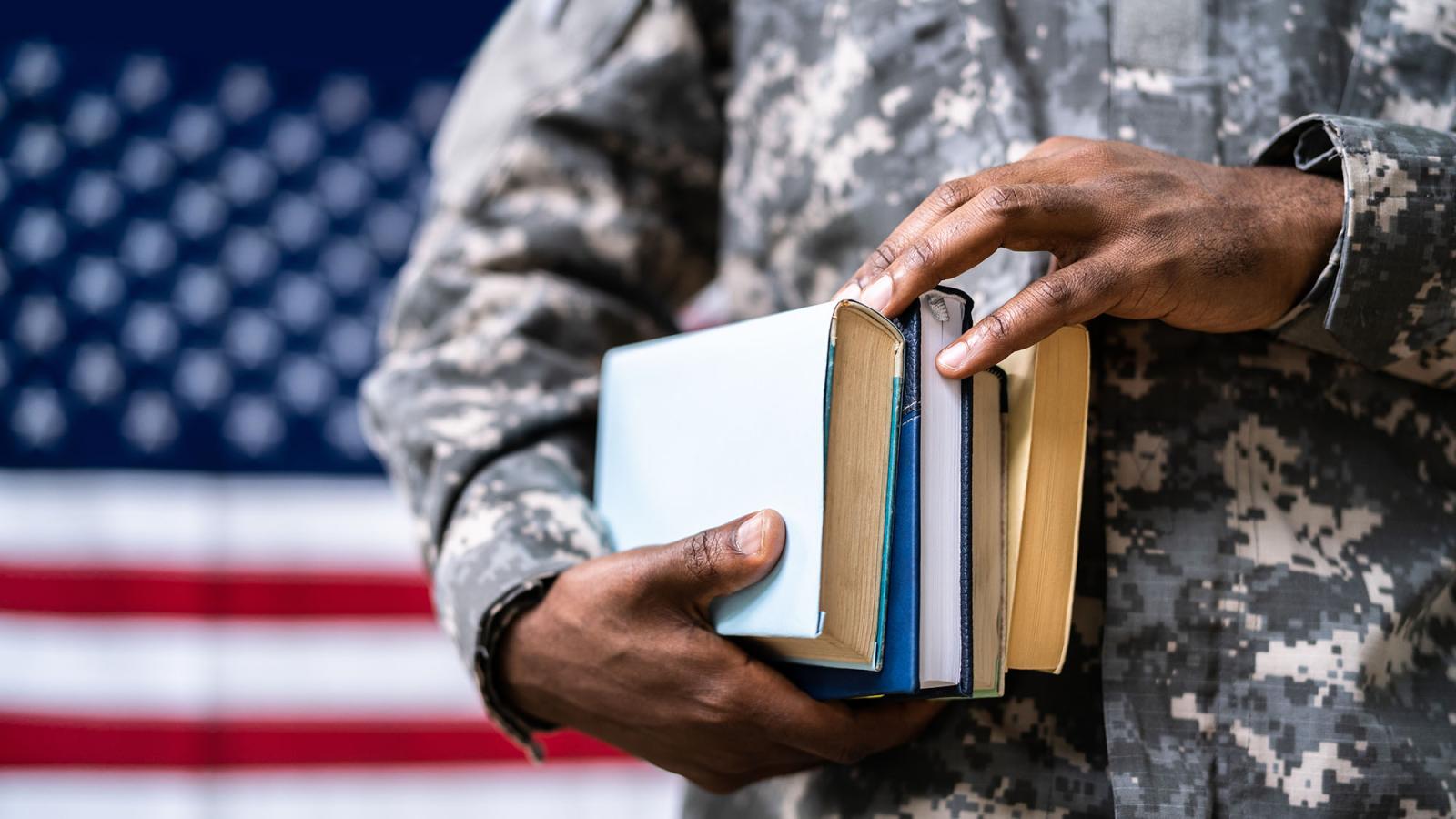
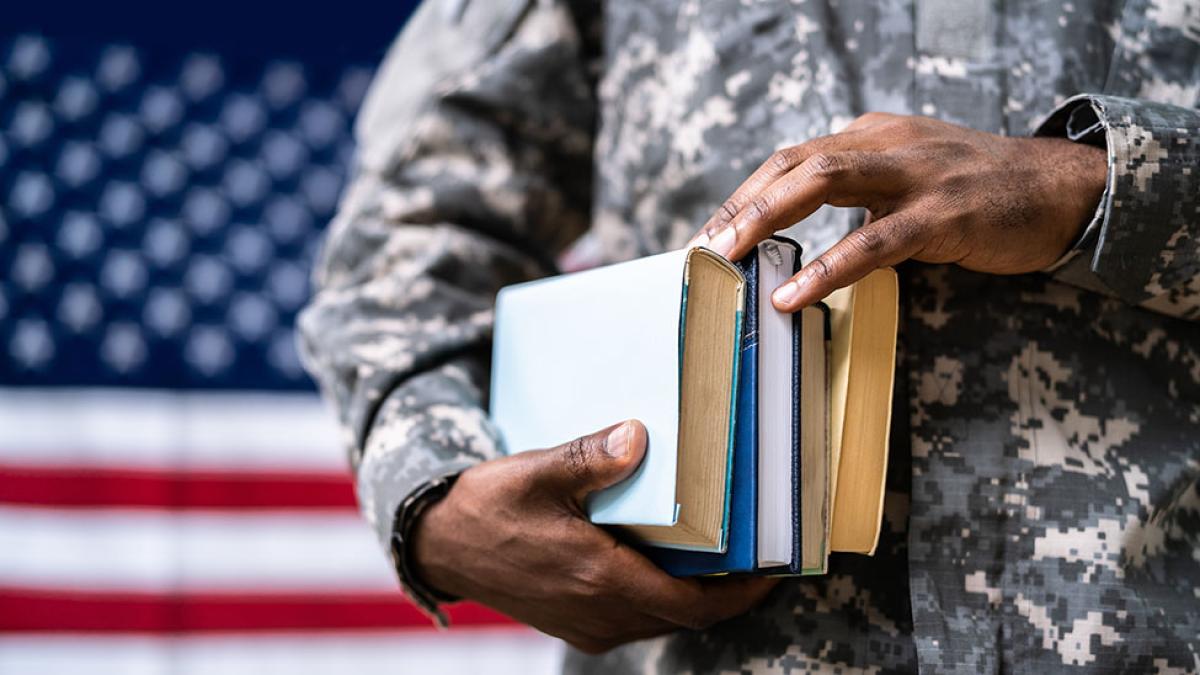
The number of people who know of someone in the military is on the decline. In 1995, 40% of the youth market had a parent in service, but by 2017 that number has dwindled to just 15%. According to a 2011 study conducted by PEW Research, 77% of adults 50 years of age and older had an immediate family member in service, whereas only about one-third of adults age 18–29 reported having an immediate family member in service.
This is largely the result of longer stretches of peacetime and more diplomacy. One of the unintended consequences, however, is a widening civilian-veteran gap, creating a divide between those who have served and the communities they return home to.
A strong sense of community and belonging can act as a defense against mental health concerns and for veterans, who are among the highest at risk for mental health crises, this sense of community is essential. But with this widening gap of experience and understanding, how do we create inclusive communities for our veterans? Especially for student veterans looking to join the campus community.
Three Veterans, Three Perspectives
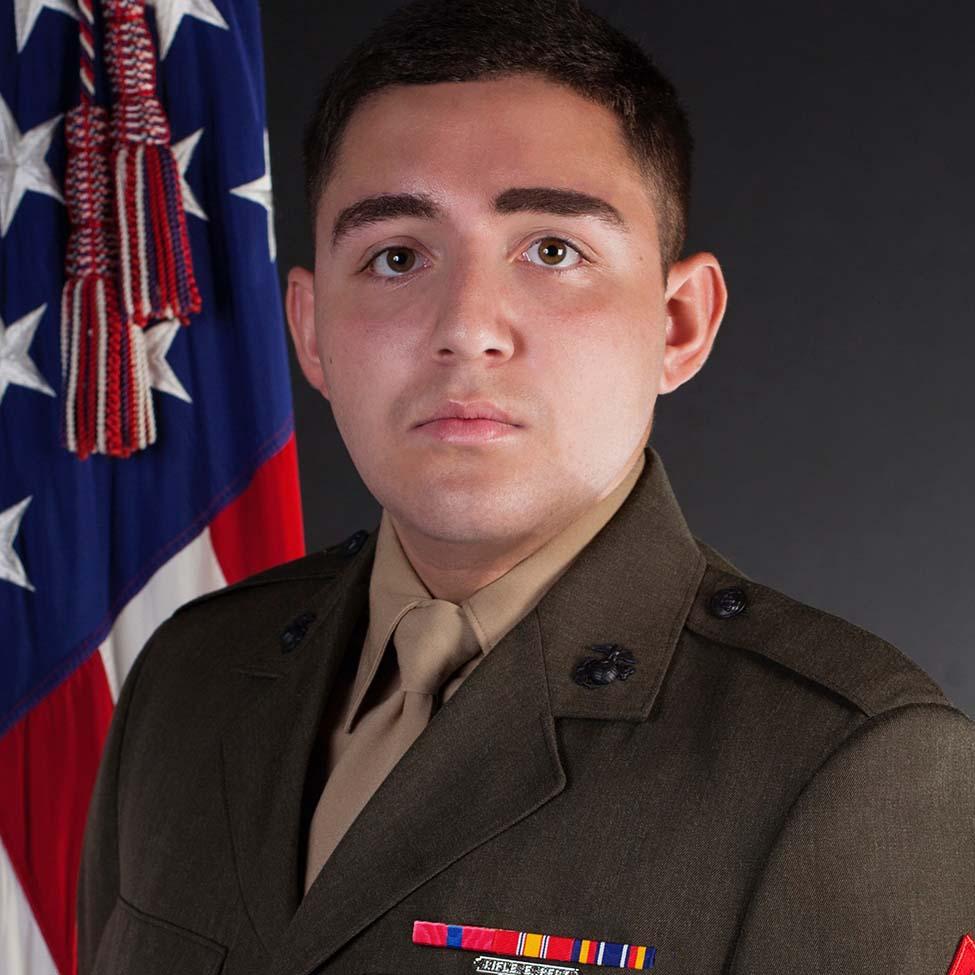
It was definitely a culture shock.
“I had way too much time on my hands, and it really took a toll on my mental health,” says Nicholas Lotto ’25. “Once I started school it was nice to get those gears going again. I basically maxed out my schedule with in-person classes, because it was definitely a culture shock.”
Lotto joined the Marines fresh out of high school until he left in 2022. During his time as a Marine, he served as an aviation operation specialist and worked with the Single Marine Program, a program suicide prevention among Marines. Now he’s a second-year accounting major on the New York Campus, and president of the Pace chapter of the Student Veterans of America.
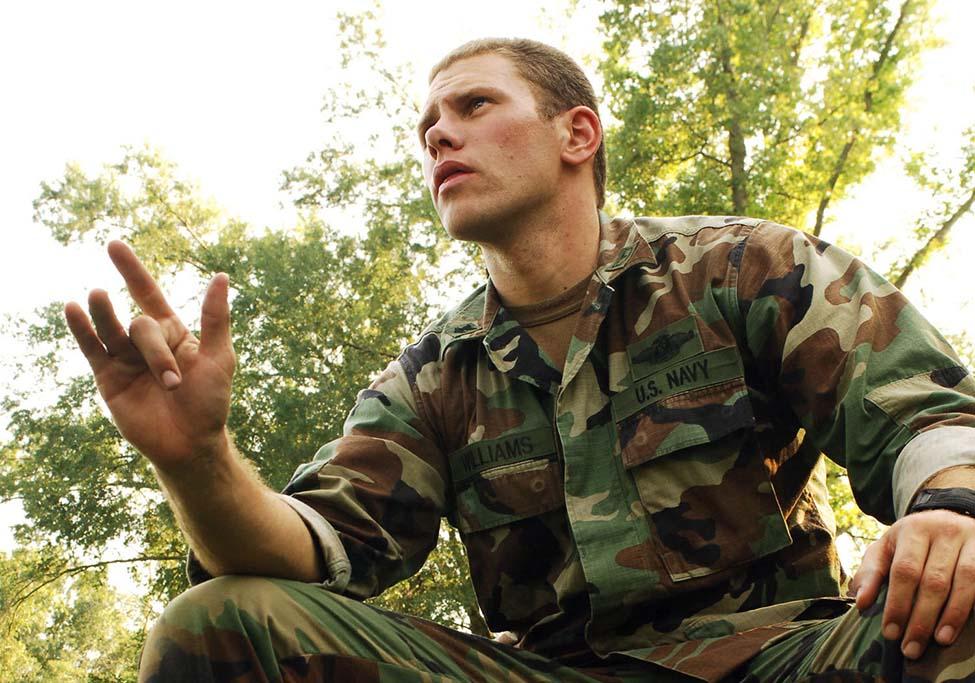
It sucks to put anyone in a box.
It sucks to put anyone in a box,” says Neath Williams ’24, “just because of where they’ve been or what they’ve done.
Williams worked in the Navy from 1999 to 2009 as a combat medic, serving three tours in Iraq. When he left in 2009, he joined the Navy Reserves, travelling all over the country, until he retired in 2022. Now he’s working on his Master of Arts in Communications and Digital Media on the Westchester Campus and is one of the founding members of the Society of Artistic Veterans.
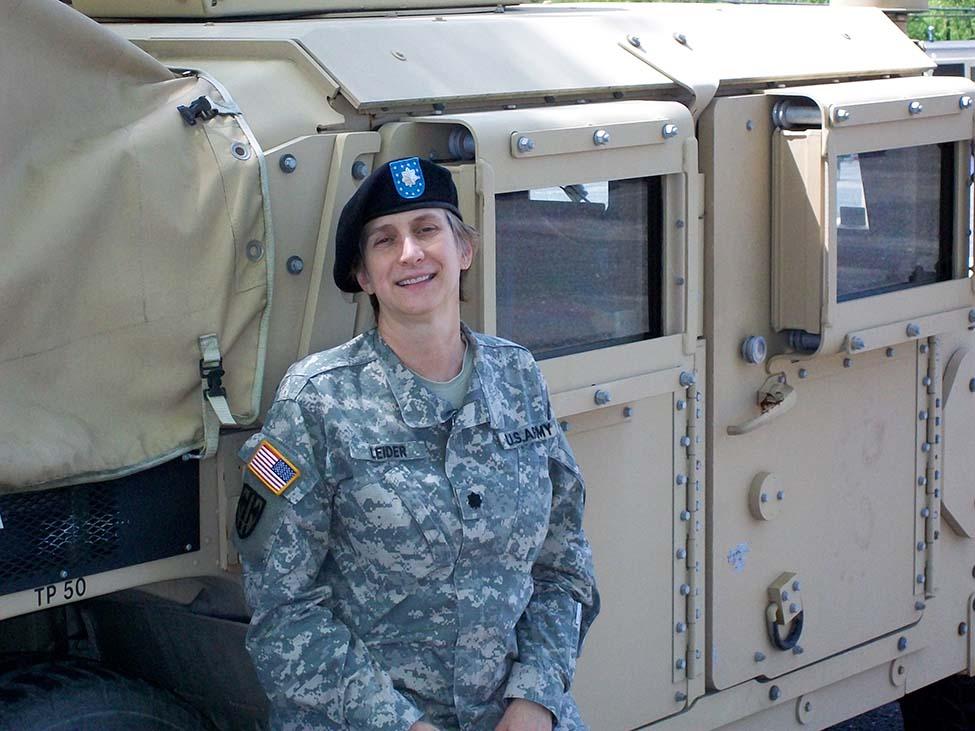
It helped me feel like I had a place I belonged.
Avery Leider, PhD, ’15, ’22 says, “When I came to Pace, I went to the campus store and bought a bunch of Pace University t-shirts and I wore them every day to class, and it helped me feel like I had a place I belonged.”
Leider retired from the military as a Lieutenant-Colonel after more than 25 years of service. She received both a master’s and a PhD from Pace in computer science and now teaches coding to girls through the Saturday Academy, and she’s been outspoken about her struggles with mental health and suicidal ideation after her retirement from service.
Lotto, Williams, and Leider all came to Pace, which the Military Times called one of the best colleges for veterans, and have been active in their efforts to build community, discuss mental health, and bridge the gap between veterans and civilians.
Nick Lotto: A Mental Health Mission
By his junior year of high school, Nicholas Lotto ’25 decided to join the less than one percent of Americans serving in the military and by his senior year he decided to enlist as a Marine.
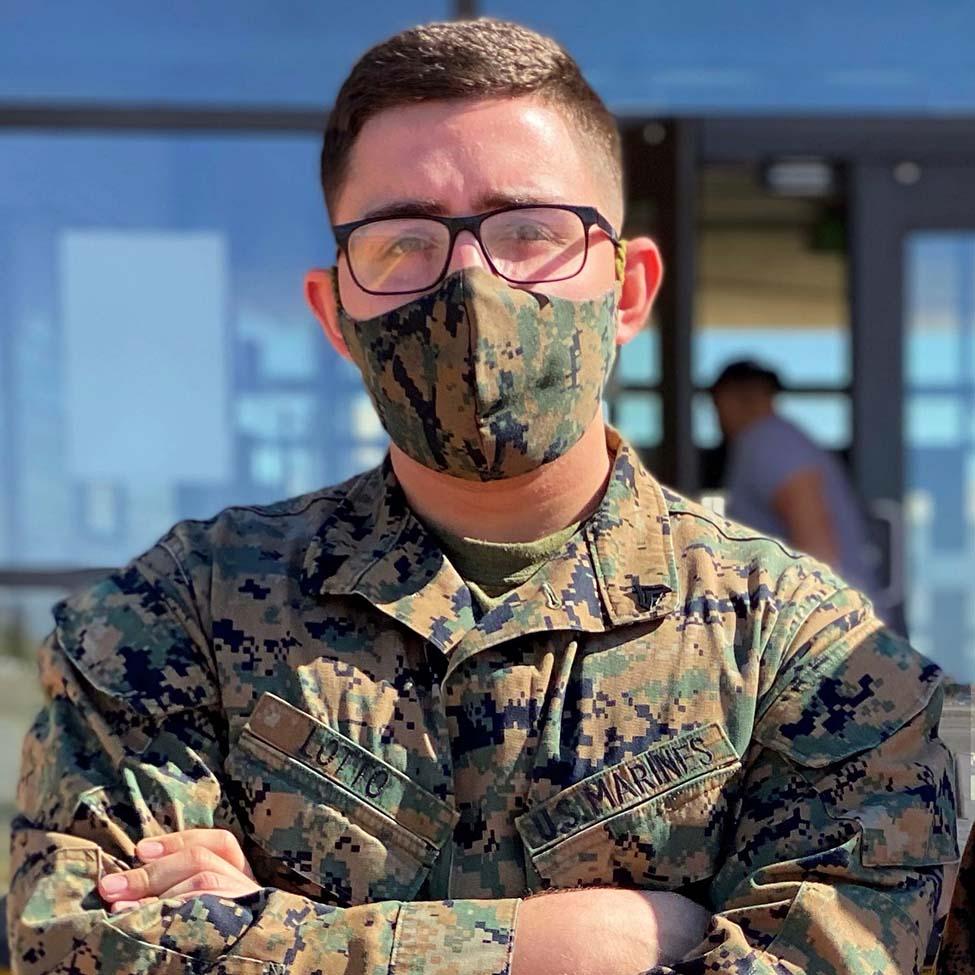
His official role in the Marines was as an aviation operation specialist, where he managed the entire ground operations for one of the busiest airfields in the country. But when Lotto wasn’t maneuvering a busy airfield, he was cautiously maneuvering the tricky minefield of improving the mental health of his fellow Marines through the Single Marine Program, which is geared towards suicide prevention among Marines.
“We work on getting Marines out of the barracks and to events to meet each other, to increase camaraderie and morale,” Lotto says. “In addition to my actual job, I was responsible for the quality of life for about 1,600 marines through the Single Marine Program.”
It’s all about building that new routine. It’s essential for our way of life.
As Lotto began to transition out of active duty in 2021 and began researching colleges, Pace quickly became a standout. “Pace University has an unlimited Yellow Ribbon program,” he explains. “Which means whatever our benefits through the GI Bill doesn’t cover, Pace covers the rest.”
The transition from full time service as a Marine to a full-time student wasn’t easy, especially while he waited for school to start. His job on the airfield typically took up 50 hours of his week, and his other billets (roles), including his work, easily extended his workload up to 100 hours–-and now he suddenly had a very open schedule. “Once I started school it was nice to get those gears going again,” he says. “It’s all about building that new routine. It’s essential for our way of life.”
Perhaps it was his work with the Single Marine Program that inspired him to take up his newest billet as president of the Pace University Chapter of the Student Veterans of America. Lotto now represents around 300 veterans and dependents across all three Pace campuses and is finding that the new mission is still the old missionimproving the mental health of veterans.
There are a lot of people who have a bad perception of the military, and we want to change their minds. We’re not just here to help our fellow veterans, we want to help our fellow students.
But just like in the Single Marine Program, Nicholas wants an active presence in the community at large, knowing the importance of connecting veterans to their wider community. “We lose 22 veterans a day to suicide,” Nicholas explains. “My mission carried over from the military into veteran-civilian life because I want to make sure the veteran community is well taken care of, and a lot of times they can be neglected because of their service or how people view them.”
The sense of belonging and being welcomed is key, and he wants to do more than just connect veterans to each other, but also connect them to their new community at Pace. Lotto says, “There are a lot of people who have a bad perception of the military, and we want to change their minds. We’re not just here to help our fellow veterans, we want to help our fellow students.”
Though Lotto is now a student, his ideals as a Marine of dedication and service to his community persist. He says, “I want to do everything in my power to make sure everybody is taken care of. That’s my biggest goal here and that’s what I plan on doing for the next couple years.”
Neath Williams: Service and the Arts
Neath Williams spent more than 20 years in service, between his time in the Navy and the Navy Reserve. His passion now is the arts, especially theater, but he still carries his years of service with him. “Anyone who has been in any job for a long time, it’s going to become part of them,” he explains. “Ten plus years of service, it’s going to be part of your exoskeleton. And I think it’s important for people to know that.”
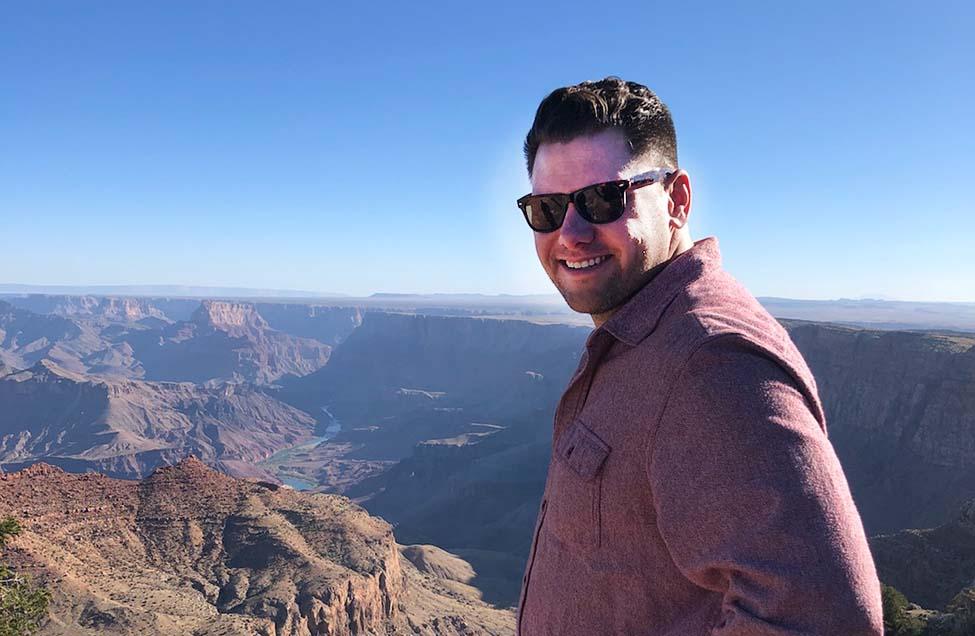
One of the things Williams appreciates most about his time in service is the scope of perspectives and backgrounds he came into contact with. He tells stories of someone he served with who swam from Cuba to Florida on a door and then immediately enlisted, and of a Venezuelan man whose last name was America and could speak fluent Arabic to the people they met. “It’s amazing to see the diversity,” he says. “It was a beautiful rainbow of people, and it felt like a reflection of the bigger scope of humanity. If I hadn't served, and just stayed in Kentucky, I don't think I would have gotten to experience that, and I very thankful for those experiences."
Ten plus years of service, it’s going to be part of your exoskeleton. And I think it’s important for people to know that.
And Williams believes this perspective in the classroom is powerful. He noticed, both in school and in previous roles in the film industry, that his military service made it easier for him to keep perspective and not sweat the small stuff. He also believes student veterans may have a more holistic view of the importance of their education. “Most have goals set for after school, and they’re focused on that,” he explains. “They may be more focused on learning the actual content rather than on passing the class. This is the stuff we came here for.”
During his time as an undergraduate student, Williams formed the Society of Artistic Veterans alongside fellow student veterans at Marymount Manhattan College, with the hopes of creating art that brought a veteran perspective, regardless of the content.
It hasn’t been lost on Williams that there are many preconceived notions about what a veteran is, and ‘artist’ is not often in that description. “Even my partner said she’d never met veterans in the arts. And then she met me and my friends who are in the arts and have a different point of view, not necessarily the view most people think of when they think of what a veteran might think. A lot of people might put veterans in a box.” He further explains, “There are a lot of groups that have appropriated military culture so a lot of us who don’t align with those want to show another version of who veterans can be. That’s important to us. And the arts are a big way to do that, especially theater.”
We need more of that in our society, more groups that are gathered to do good things for each other. Through theater, though, I think we can do that.
Williams is quick to remind that, despite this view, “there’s a long history of the arts coming from military service,” citing Ancient Greece, where generals were often playwrights, soldiers’ training included theater, and plays often re-enacted military campaigns. And it certainly makes sense because, as he puts it, “Those kinds of situations lead to storytelling.”
That is one of the goals of the Society of Artistic Veterans, to tell stories that veterans have had a hand in bringing to life, and to open a dialogue with audiences. Their performances always include talkbacks, where audiences can ask questions and veterans can offer their perspectives, and perhaps do some healing. “Storytelling is a healing process itself. If you get men and women who served together, eventually they’ll start swapping stories. When you do a staged play or a reading, there’s some of that as well,” he explains. “We could bridge the gap after the play, by being in the room with the civilian actors and audience members where those conversations could happen.”
Now that the initial shock of the pandemic is settling and live performances are beginning to return, Williams is hoping to rebrand the Society of Artistic Veterans into a theater collective, with a veteran-forward mission that not only brings healing and stirs these important conversations but also helps bridge the civilian-veteran gap. “You miss that camaraderie you have in the units,” he says. “We need more of that in our society, more groups that are gathered to do good things for each other. Through theater, though, I think we can do that. Even if it’s just for a moment.”
Avery Leider: Sharing Her Story
Dr. Leider can’t seem to speak highly enough of her time at Pace, from the encouragement of her faculty, the exciting nature of the content in her program, to the support she received as she transitioned to student life after she retired from the Army as a Lieutenant-Colonel. “Pace has a very supportive environment. They have a veteran’s coordinator that makes sure you get your benefits and fill out your forms on time. And Career Services does a really good job of putting together a veteran job fair to connect veterans with employers specifically looking to hire veterans,” she explains. “That kind of support, and the Yellow Ribbon Program, makes you feel welcome.”
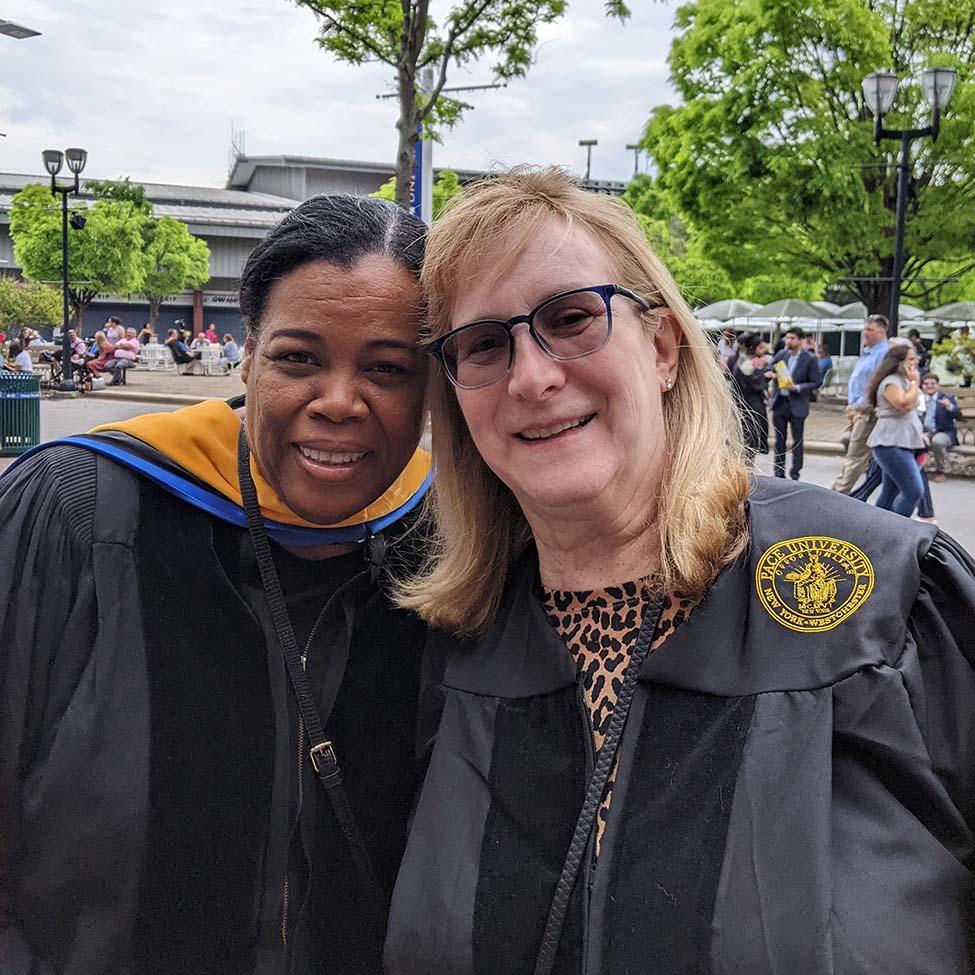
She enjoyed her time so much as Pace that after completing her Master of Science in Computer Science in 2015, she returned for a doctorate in computer science, which she completed in 2022. With guidance from her doctoral advisor Pauline Mosley, DPS, she studied quantum computing and practiced grant-writing, and she’s now teaching coding to girls between the ages of 10 and 14 through the Saturday Academy, a job she secured with help from Mosley.
Before she got her degree, Leider was already entrenched in computer science in the military, where she served for more than 25 years. “Women are in the minority in most areas of the military, especially in the Army, so I was always trying to prove myself. And I loved it,” she says. “It was adrenaline, a fix, it was a constant need to prove myself, that I was better at computers, that I was smart. To prove that you needed me no matter how eager you were as a male soldier because I was better with computers.”
It was adrenaline, a fix, it was a constant need to prove myself, that I was better at computers, that I was smart.
But eventually, her time in service came to an end. “Eventually, you age out and you need to go, because the Army is all about young people,” she explains. “You have to retire and do something else, and that was so hard for me to see.”
Leider has recently opened up about just how hard it was for her to cope with this period of her life. “I couldn’t see my future anymore. I thought that the Army was the only place for me, and there was no place beyond the Army. I thought that was my whole life,” she explains. “When I started to look at retirement from the military, I started to get thoughts of suicide. They didn’t disturb me at first but when they did eventually, they caused me to have a suicide attempt.”
She credits the reason she is here to tell her story to the Veteran’s Hospital, where she was eventually transferred. “I got life-saving treatment. I’m still under their care, I still see VA doctors and therapists. It’ll be for the rest of my life, but I have no suicide ideas at all, and I get really good care.” Leider wishes more veterans would reach out and receive the services she did. “The Department of Veterans Affairs sees more veterans with suicidal ideations than any other healthcare system in the world. So, they know how to do it. They’ve stopped many a suicidal vet from carrying out their ideas.”
There’s also separation grief. There is a lot of friendship and camaraderie in service. When you hang up your uniform, you leave it behind.
Leider explains what the research shows—veterans are the majority of people attempting suicide, and 22 veterans succeed every day. She can empathize with that sense of hopelessness and the misguided certainty that suicide is the only option. More than anything, she thinks the reason veterans are so at risk for suicidal thoughts comes down to grief. “Grief that we’re not on the frontline fighting or contributing as much as we could. Only a small percentage of the active-duty soldiers are in the line of fire. So, all of those who are not feel tremendous survivor’s guilt. There’s also grief for those you know who are injured or killed.” She continues, “There’s also separation grief. There is a lot of friendship and camaraderie in service. When you hang up your uniform, you leave it behind.”
Leider is certain of one thing—the right kind of intervention works. She explains, “I know in my case I was very irritable towards my family and friends who loved me because I wanted to distance myself from them so they would not interfere with my plans. However, I did get interference from the VA, who knew the right words to say to me to get me to accept treatment, and I can say I am grateful for each moment of my life today.”
To think that I was once in that place, because I couldn’t see my future—I can’t imagine now being that way.
Leider only first shared her experience with suicide in November 2022, when she was a guest on “The Greenburg Report” on WVOX. She shared her story, as well as information on the newly fully-funded federal suicide hotline, 988. Leider didn’t intend to tell the story, but “it just came out,” She admits. “But it felt good to share the number. The show’s host, Paul Feiner, later had a call-in from the veteran community there and they agreed it was good to share the number, to help get veterans in treatment.” She fully believes that the number of veterans lost to suicide is not because help isn’t available, but because they don’t seek help.
These days, Leider has a lot of hope. “To think that I was once in that place, because I couldn’t see my future—I can’t imagine now being that way.” And she’s excited about the opportunity to study the newest innovations in computer science and to be on the frontlines of future thinking. As she explains it, “Thinking about the future is an inoculation against suicidal ideations.”
One Pace, One Community
The way we treat our veterans has come a long way, but offering veterans a hearty welcome and a sense of community is just one necessary component of veteran inclusivity. Looking beyond a uniform and our preconceived notions of service creates space for different perspectives and a growth as a unified community—at Pace and beyond. As our world gets better at settling conflict, and that civilian-veteran divide continues to widen, creating veteran-inclusive communities can mean all the difference. After all, as Lotto puts it, “At the end of the day I see us as one Pace, one community.”
For information on Veteran’s services at Pace, visit the Veteran’s Office website.
If you want to learn more about the Student Veterans of America chapter at Pace, send an email to svanyc@pace.edu or join their Discord server.
Learn more about the Society of Artistic Veterans and check out archives of their work.
If you or someone you love is struggling with suicidal ideation, please utilize the 988 Suicide and Crisis Lifeline. Veterans can press 1 to be connected to veteran-specific help and services.
More from Pace Magazine
Through an inter-collegiate emerging technology competition, graduate students Chuk Ezuma and Rikin Gajjar developed M3, a product that would enable medical professionals to treat elderly patients using the technology of tomorrow.
Through interdisciplinary collaboration, the School of Education and Dyson's Film and Screen Studies departments are helping a major school district in Florida tackle the challenges of today’s teacher shortage head-on.
The Pace Entrepreneurship Studio supports new startups, from ideation to funding—from conception to operation. Our mission is to teach you the "how" and to support the "what"—providing students and alumni with a complete blueprint for establishing successful businesses.
Tabi Haly '06: Taking a Stance
Meet Tabi Haly '06, the software engineer, singer-songwriter, disability advocate, and proud New Yorker taking a stance.
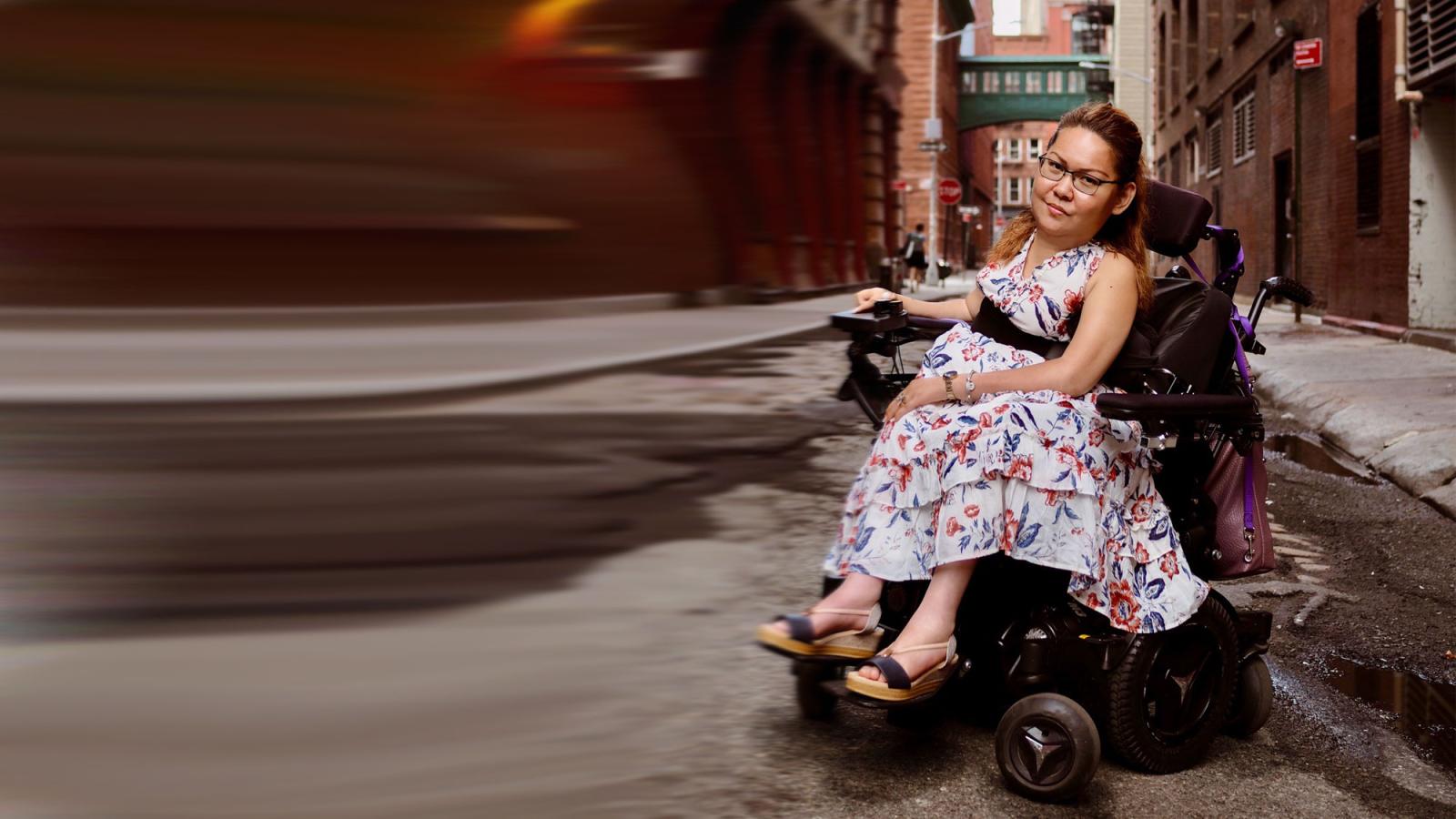
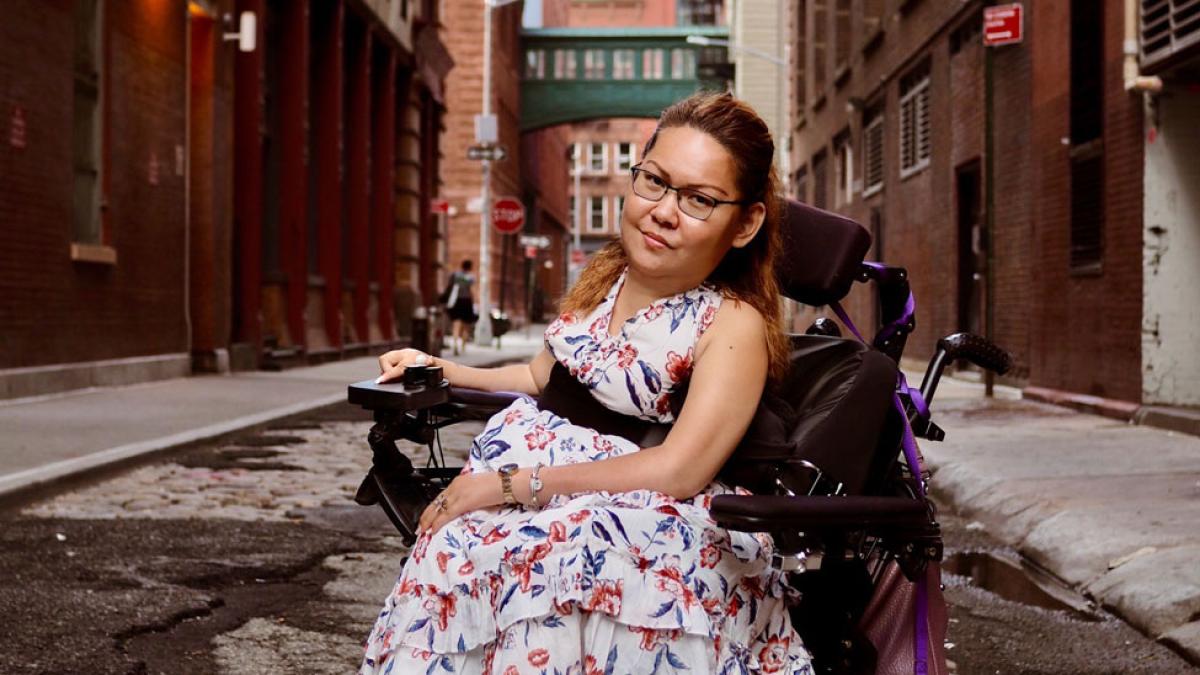
Millions of people live in New York City, but few have done it better than Pace University’s own Tabi Haly ‘06. From the day Haly moved into her Pace downtown dorm room, she fell in love with the opportunities the city provided. In a metropolis like this, fortune favors the bold and if Haly is one thing, it’s bold. A singer-songwriter with a debut album under her belt, she’s performed at iconic venues like Mercury Lounge and Rockwood Music Hall. She’s dazzled audiences with her Mona Lisa smile and chic, blue-green evening gown during New York Fashion Week and was even highlighted in a Vogue article covering the show. She has even been featured by New York Times and still works as a software engineer. She has achieved, and continues to achieve, many successes, despite a major obstacle.
Before her first birthday, Haly was diagnosed with spinal muscular atrophy (SMA), a rare degenerative genetic disease that affects muscle movement and respiration. She’s never been able to walk, and her condition worsens as she ages, leaving her with very little mobility. However, she never let that slow her down.
Haly graduated Pace University summa cum laude with a Bachelor of Science in Computer Science. She loved her time at Pace University and built friendships that last to this day. Just like with New York, Haly found love at first sight with Pace.
"Everyone was so welcoming and friendly—they looked at me without looking down at me and it felt nice.”
“I call it the moment of truth—when you observe something and take a mental note that impacts how you think or feel about it. My moment of truth at Pace was so positive. I remember being stopped by students saying things like 'are you going to go here? you should go here, girl!' Everyone was so welcoming and friendly—they looked at me without looking down at me and it felt nice.”
While studying at Pace, Haly loved singing in the choir. At the end of her freshman year, she excitedly prepared for the group’s annual performance at the Schimmel Center. When she arrived at the first rehearsal and looked around, her heart sank. The choir leadership forgot to see if their selected stage was accessible for all members.
While her peers joyfully sang on stage, Haly was in the audience cheering them on. The next day, however, she put herself to work. She became an active advocate and wrote letters, imploring those in power to make the theater accessible so everyone could get their shot in the spotlight. Because of her effort, Schimmel Center became fully accessible.
Haly learned how to use her voice to advocate for herself. Her strength stemmed from necessity but has now grown into so much more. Haly’s second album, Stance, will explore her experience living with SMA but, her paramount goal is to inspire others to stand up for themselves.
“When I say ‘Stance,’ I mean standing up for yourself. I’m excited for people to hear it and listen to what I’ve been through the last few years because singing is what got me through [the] tough times. My goal is to have people hear my music and feel like they can stand up for themselves and feel better.”
Learn more about this trailblazing Pace alumna or to listen to her music.
More from Pace Magazine
Through an inter-collegiate emerging technology competition, graduate students Chuk Ezuma and Rikin Gajjar developed M3, a product that would enable medical professionals to treat elderly patients using the technology of tomorrow.
From amazing stats to stellar students and alumni, here are just a few of our favorite things.
Biology professor Nancy Krucher, PhD, understands the transformative power of research. She’s a pioneer in the fight against breast cancer, and she’s just received a three-year $400,241 grant from the National Cancer Institute through the National Institutes of Health to study new methods to combat cancer cell development of resistance to targeted treatments.
From Copywriter to Coach, and Beyond
Director of Communications and Strategic Operations at Seidenberg; executive and life coach for LGBTQ+ leaders; INvolve 2022 OUTstanding LGBT+ Future Leader; and NASA diversity, equity, and inclusion panelist. Katie Todd has been busy ever since they left Scotland and came to Pace and they show no signs of stopping. Get to know this Pace powerhouse.
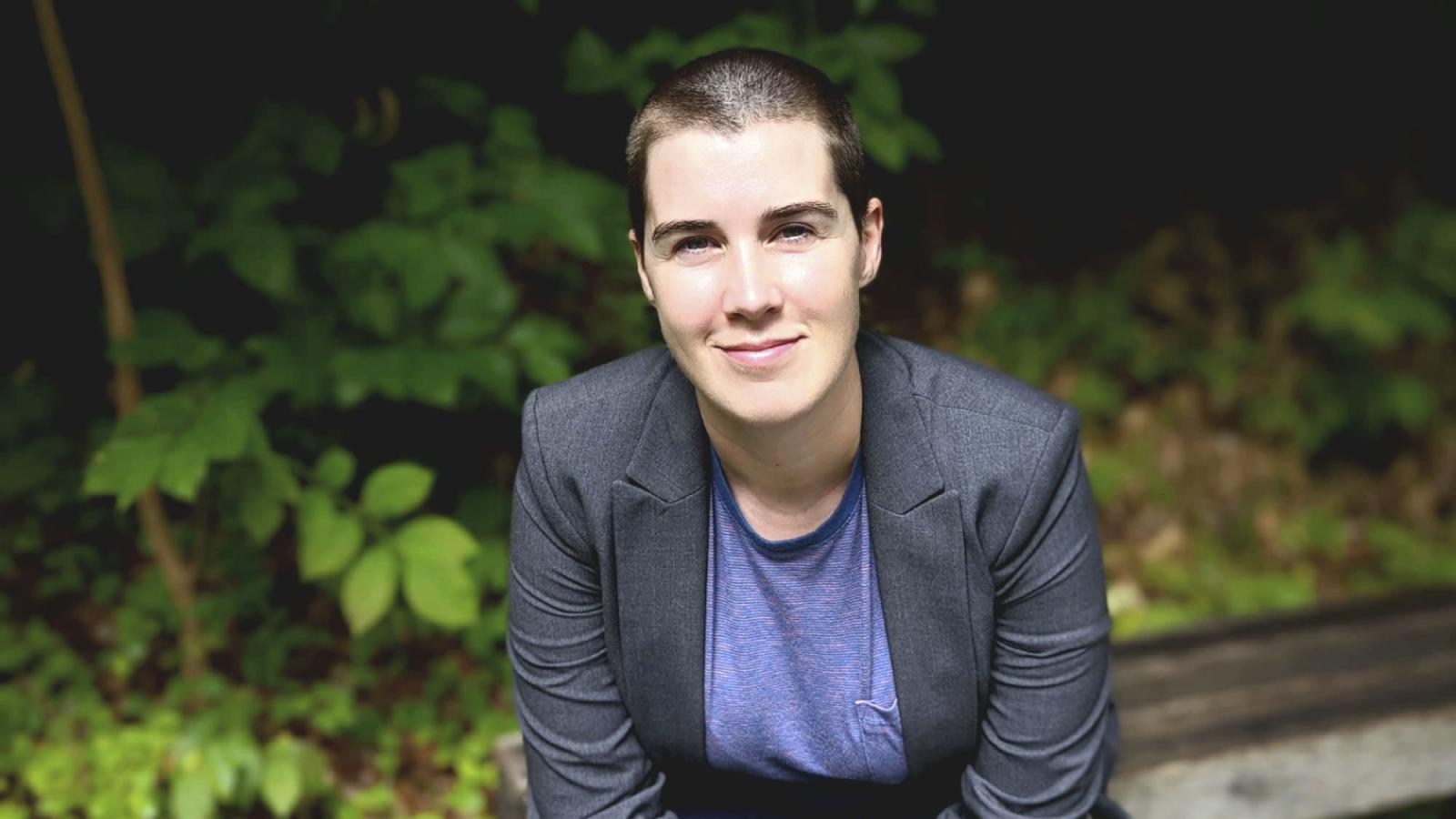
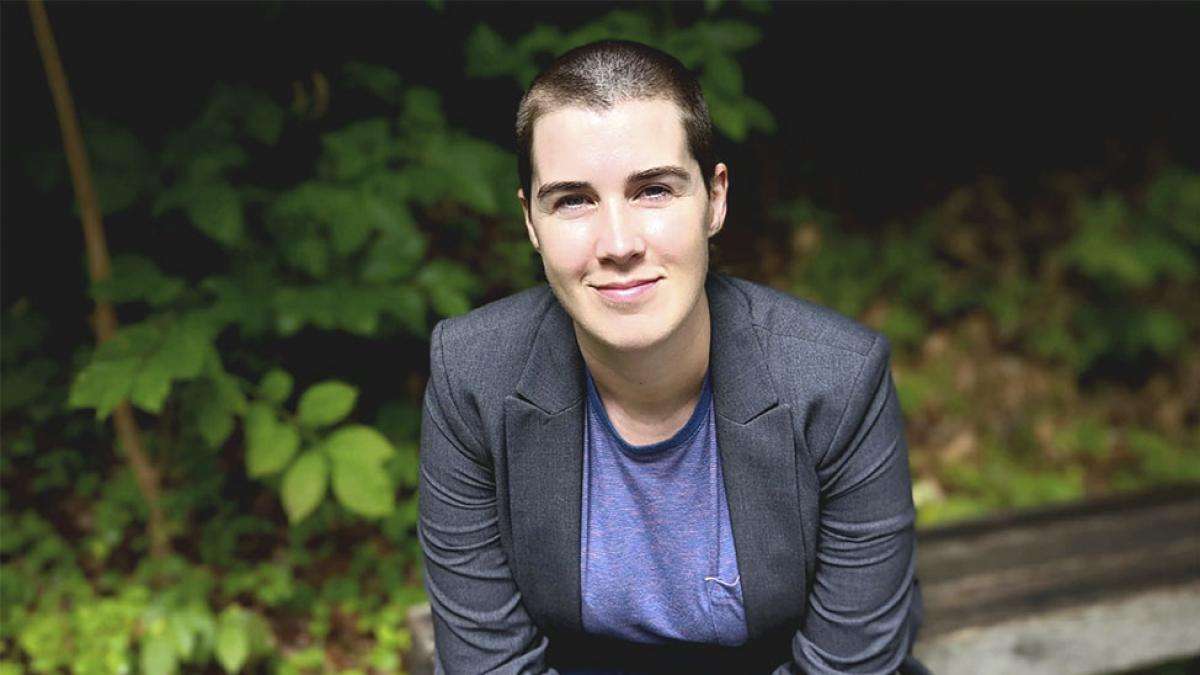
“There’s something really magical about supporting people through growth,” says Katie Todd (she/they) ’15, ’24, director of Communications and Strategic Operations at the Seidenberg School of Computer Science and Information Systems. “I get to do that every day, whether it’s with students, faculty, or staff. Being there as students enter the classroom for the first time all the way through to when they graduate is a gift. You never forget your first set of students you’re present for their entire four-year journey.”
Todd, who originally hails from Scotland, came to Pace as part of the MS in Publishing program and eventually landed a role within Seidenberg as a copywriter. After meeting with then-Associate Dean Jonathan Hill, DPS, Todd says she was hired on the spot for $8.25 an hour (still her hourly rate! she kids).
Since then, her role has expanded within Seidenberg. As Director of Communications and Strategic Operations, she not only makes sure that things in Seidenberg are running smoothly but she gets to talk about how outstanding the programs and the people who bring them to life really are. They’ve also got a very unique perspective to add to the mix: they are currently a grad student working on her second master’s in Seidenberg’s Human-Centered Design program.
“The folks I get to work at Seidenberg with are a phenomenal bunch. The faculty and staff both are from all over the world and it’s so cool to work with such a mix of people,” she says. “My staff team is the best at keeping the humor going as we work through all kinds of challenges in a flexible, dynamic way where there’s a lot of trust. I’m very grateful for that.”
Outside of Pace, Todd’s got a lot on their plate and their work is getting noticed. This past year, they were selected as an INvolve 2022 OUTstanding LGBT+ Future Leader and, recently, they have been added to NASA’s roster of diversity, equity, and inclusion professionals to participate on inclusion panels in the future.
“I have my own executive and life coaching practice, Pride Coaching, through which I support LGBTQ+ leaders and our allies in creating a better world,” says Todd. “It’s vocational work for me that takes my skills and passion in people development and applies them to a community looking, not just to be accepted, but to be seen and celebrated as they are.”
In addition to coaching, Todd works to educate people on various aspects of the queer community, including workplace development sessions that focus on inclusion and respect. “A lot of people mean well but just don’t have the knowledge or understanding to feel comfortable speaking to or about queer people—especially trans and non-binary people,” Todd explains. “I give them the opportunity to ask questions in a way that feels safe and welcoming. I’ve run sessions at Pace and worked with some really wonderful companies, too.”
So, where do they see these paths taking them?
“That’s a good question! My personal mission is to make coaching accessible to as many people as possible and to make the world a safer place for queer people to live authentically,” says Todd. “I can’t do that alone, so a big part of what I’m up to at the moment is just finding like-minded people and growing my vision of what’s possible. It’s a really exciting time.”
Want to get connected with Katie? Reach out to her on LinkedIn.
More from Pace Magazine
Through an inter-collegiate emerging technology competition, graduate students Chuk Ezuma and Rikin Gajjar developed M3, a product that would enable medical professionals to treat elderly patients using the technology of tomorrow.
Meet Tabi Haly '06, the software engineer, singer-songwriter, disability advocate, and proud New Yorker taking a stance.
From amazing stats to stellar students and alumni, here are just a few of our favorite things.

